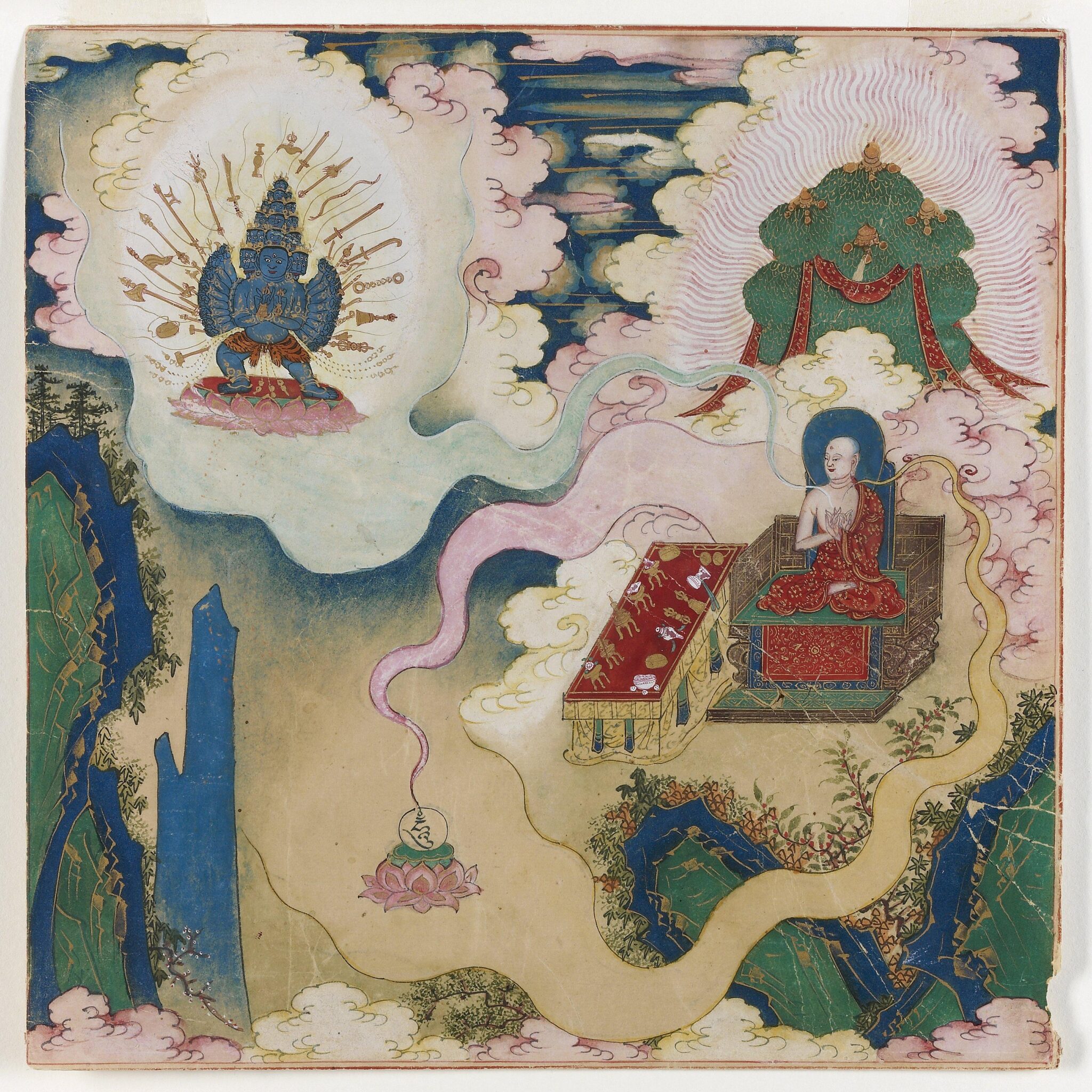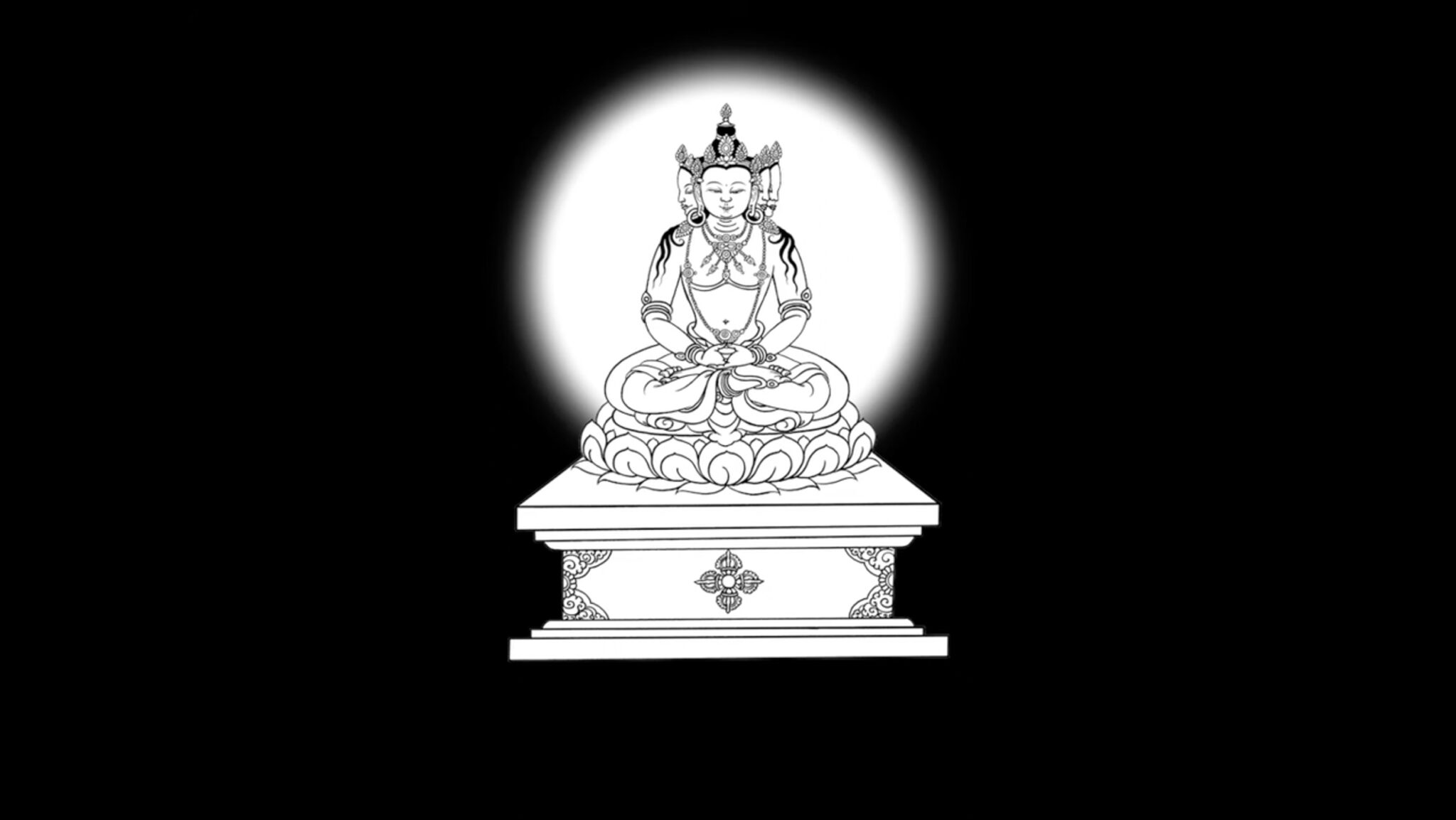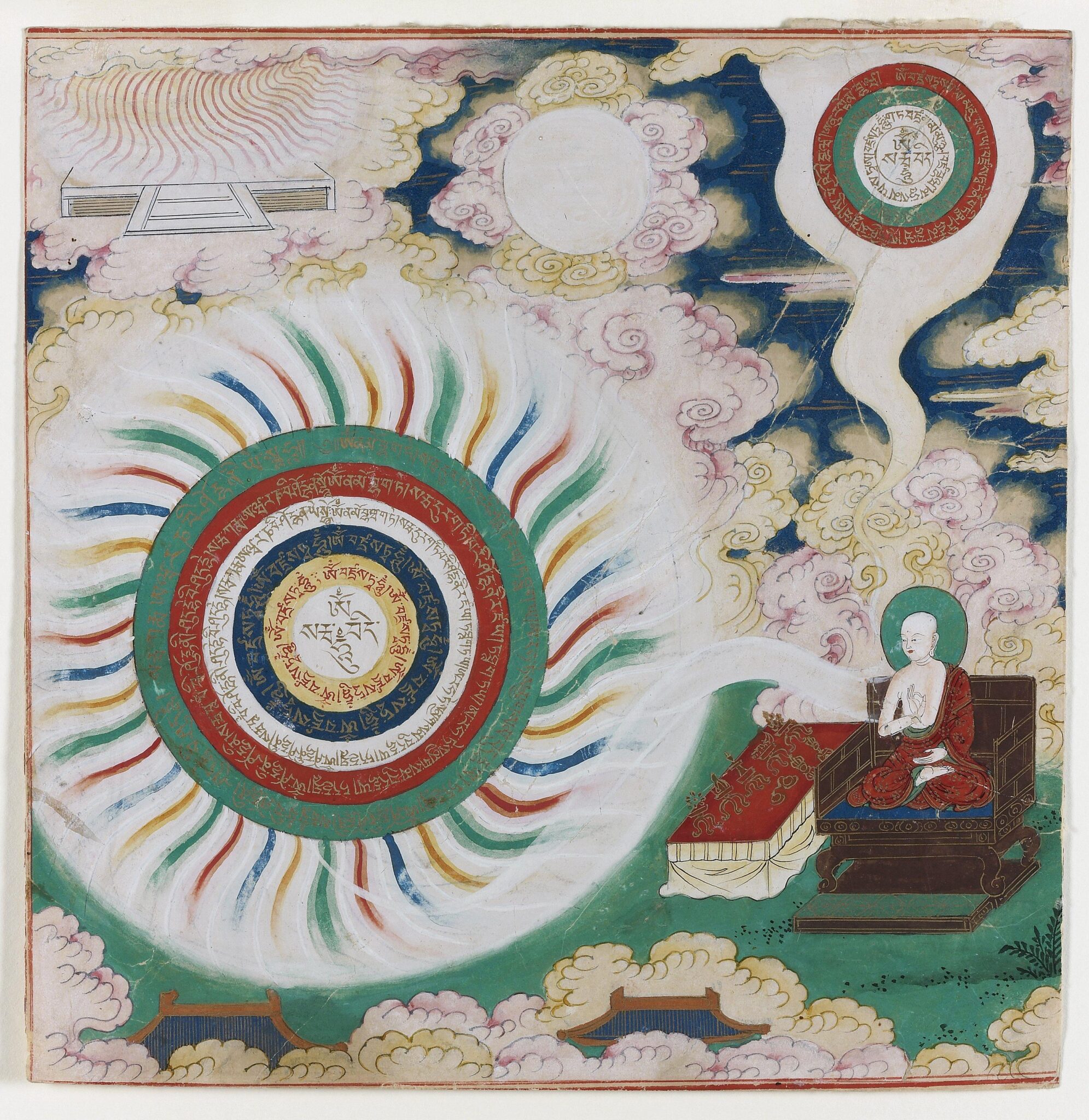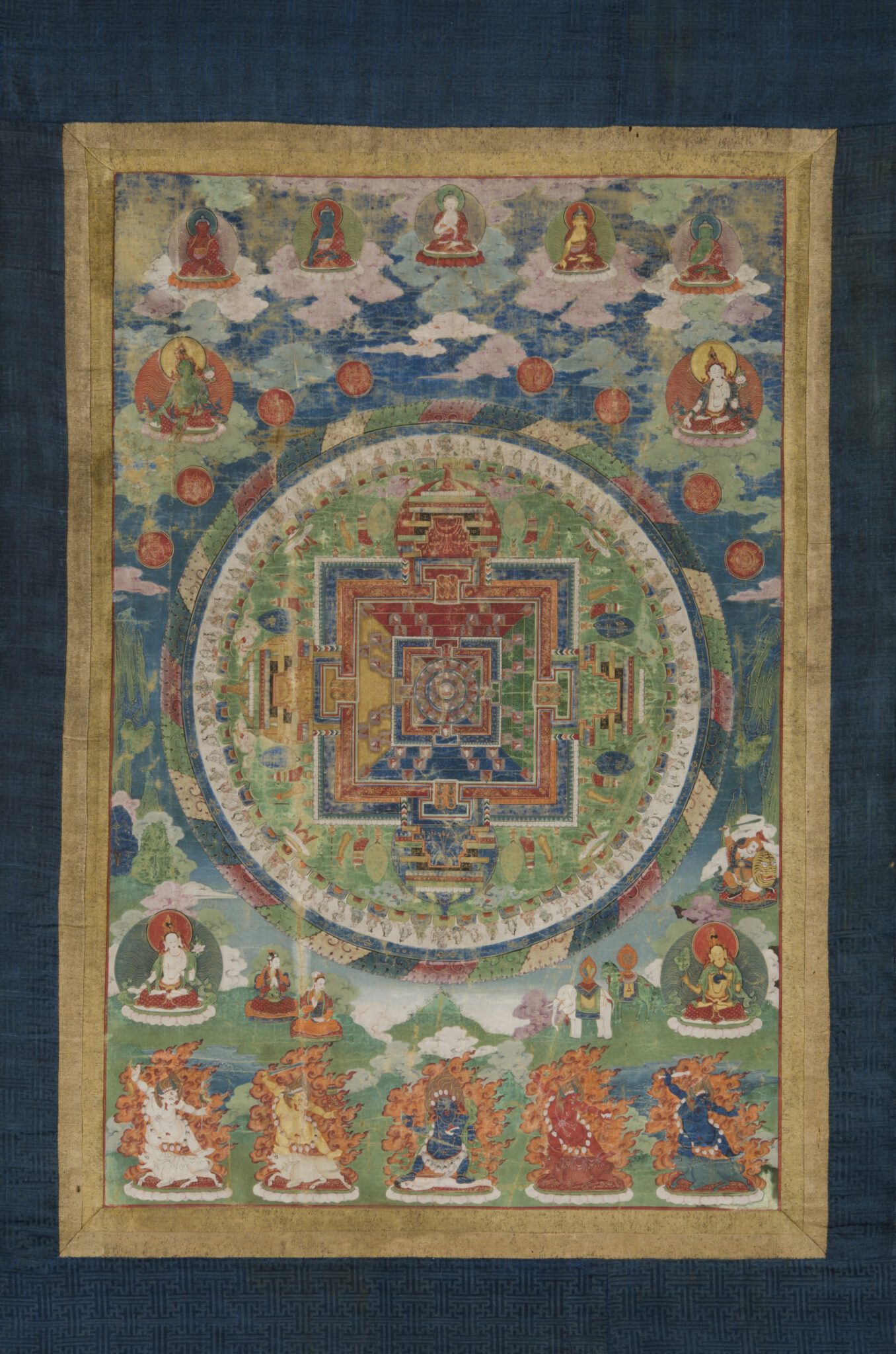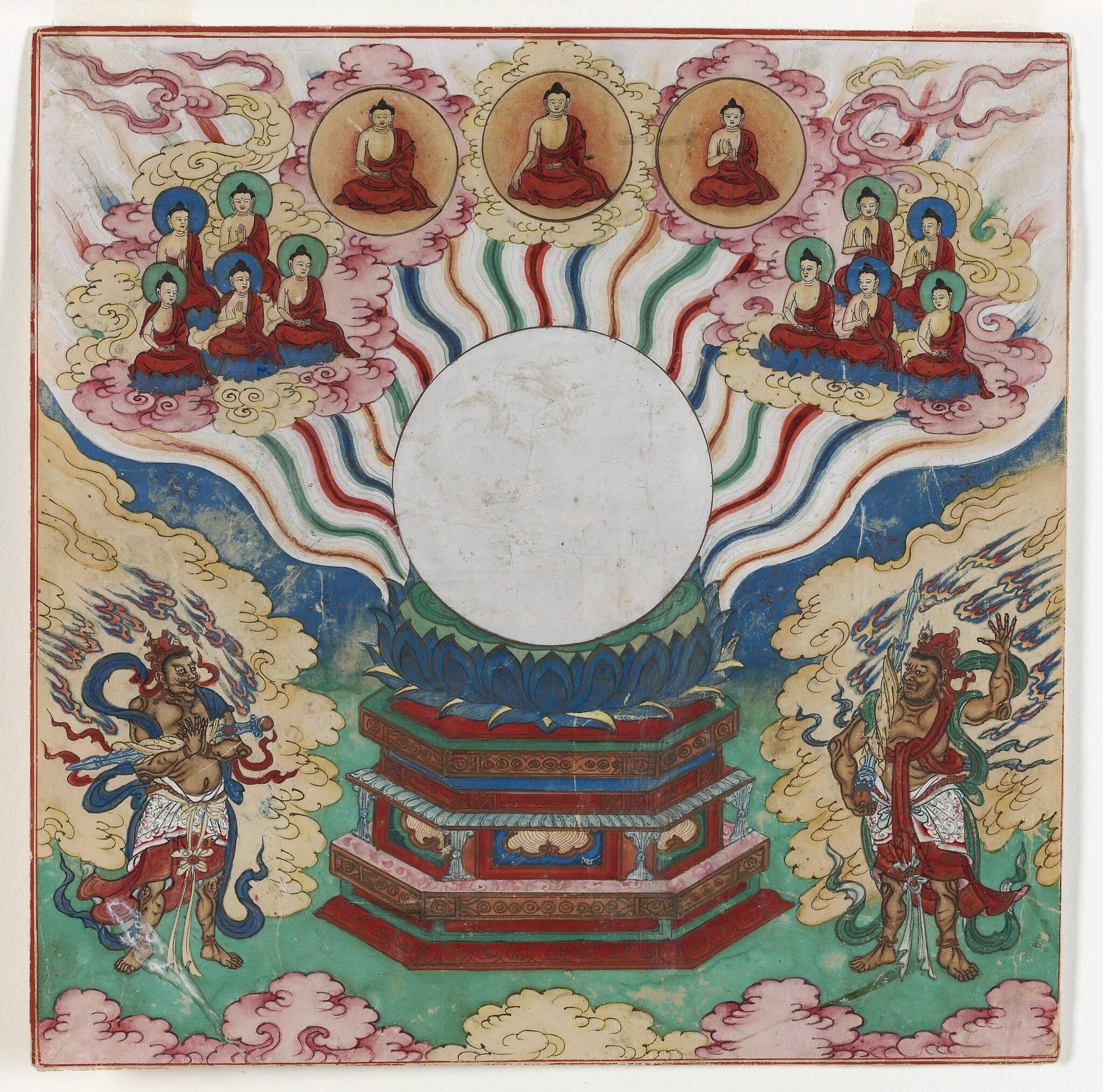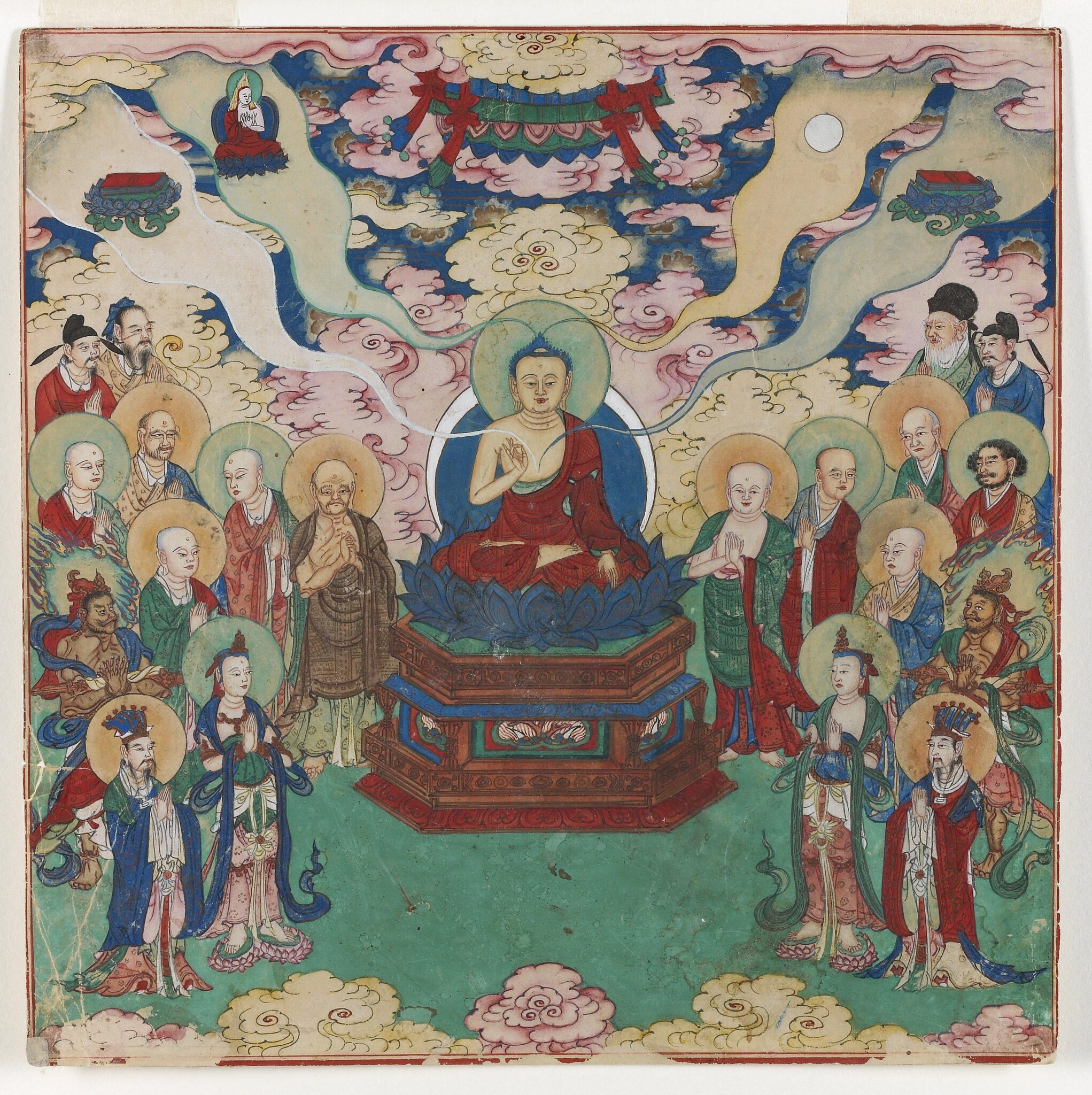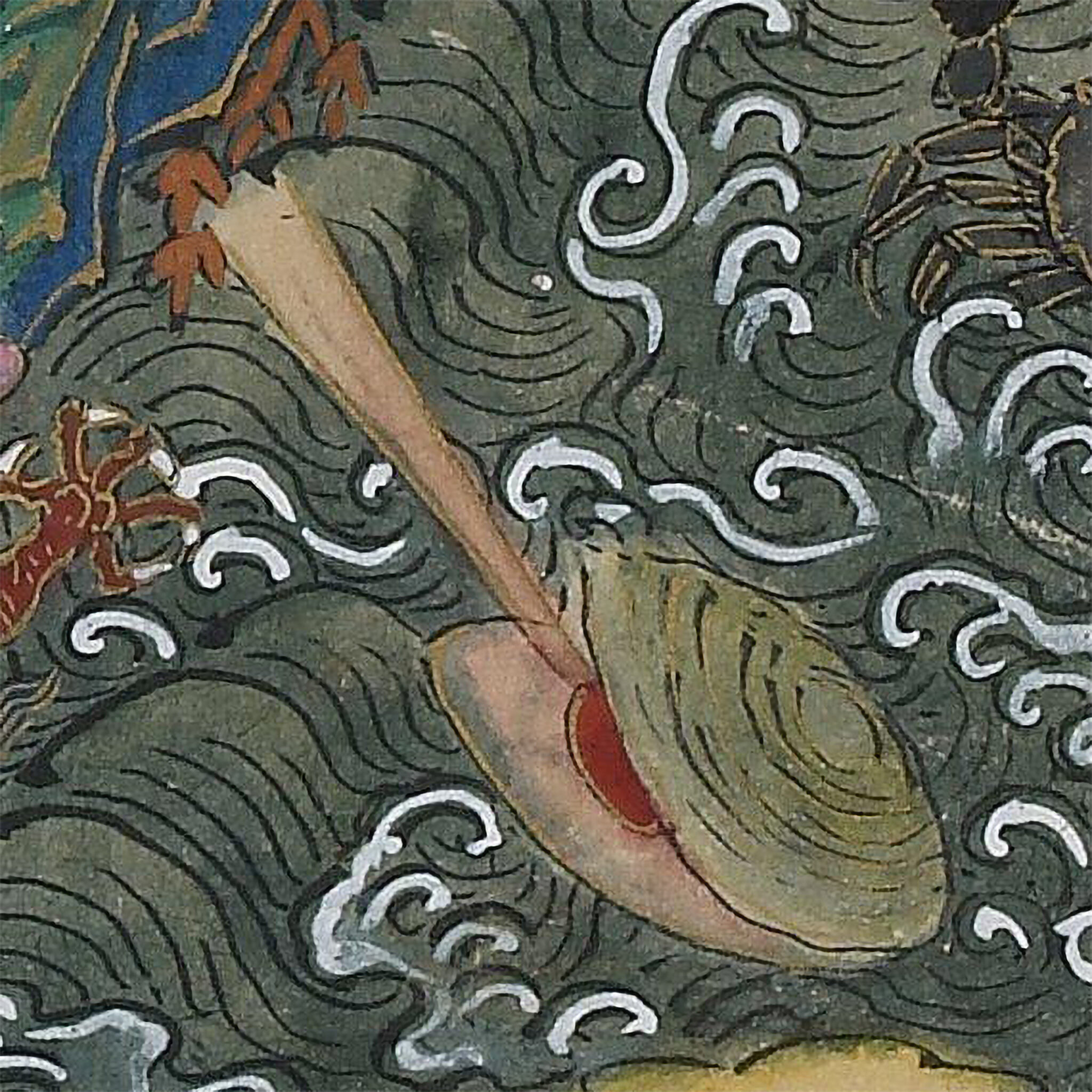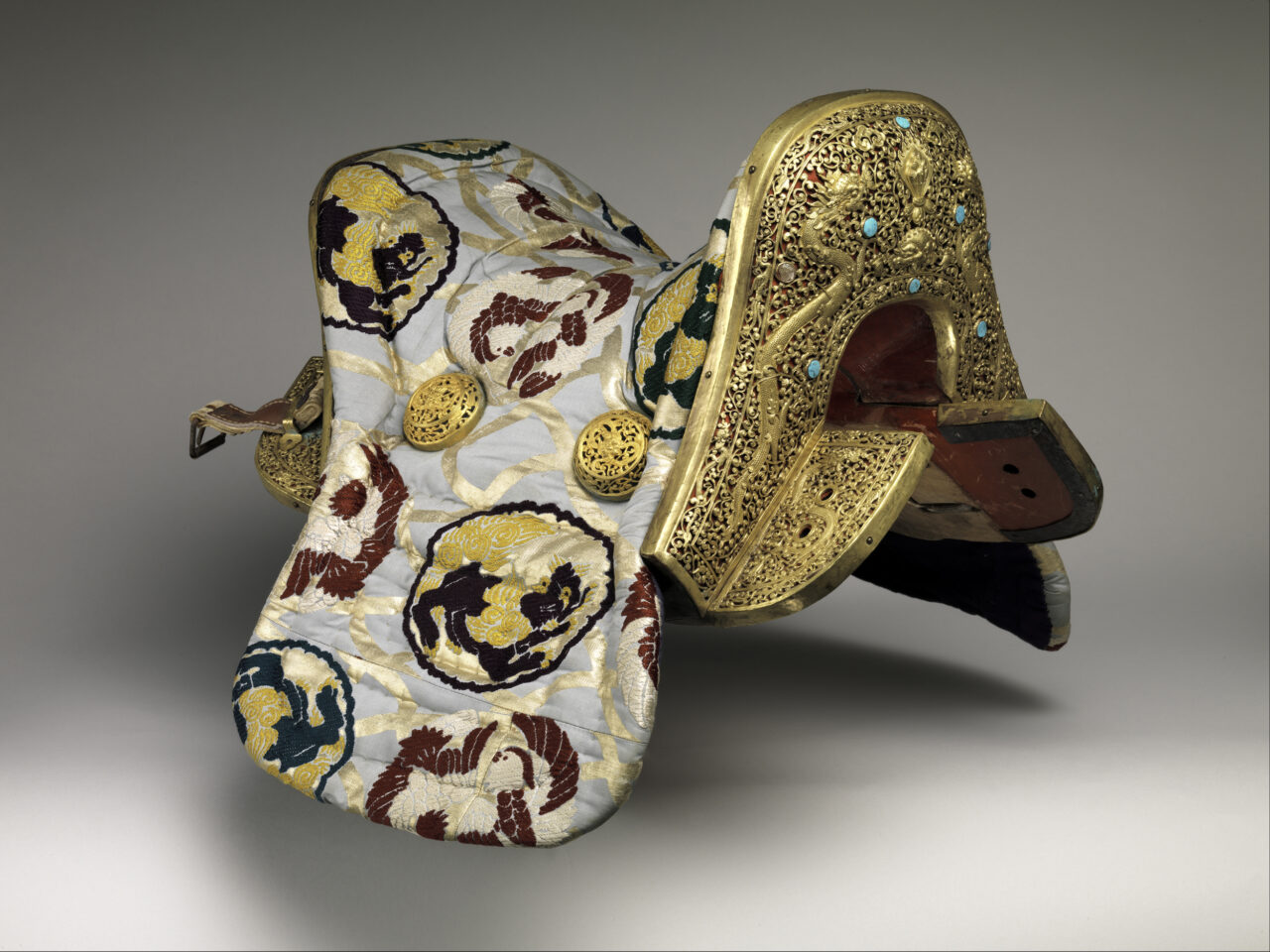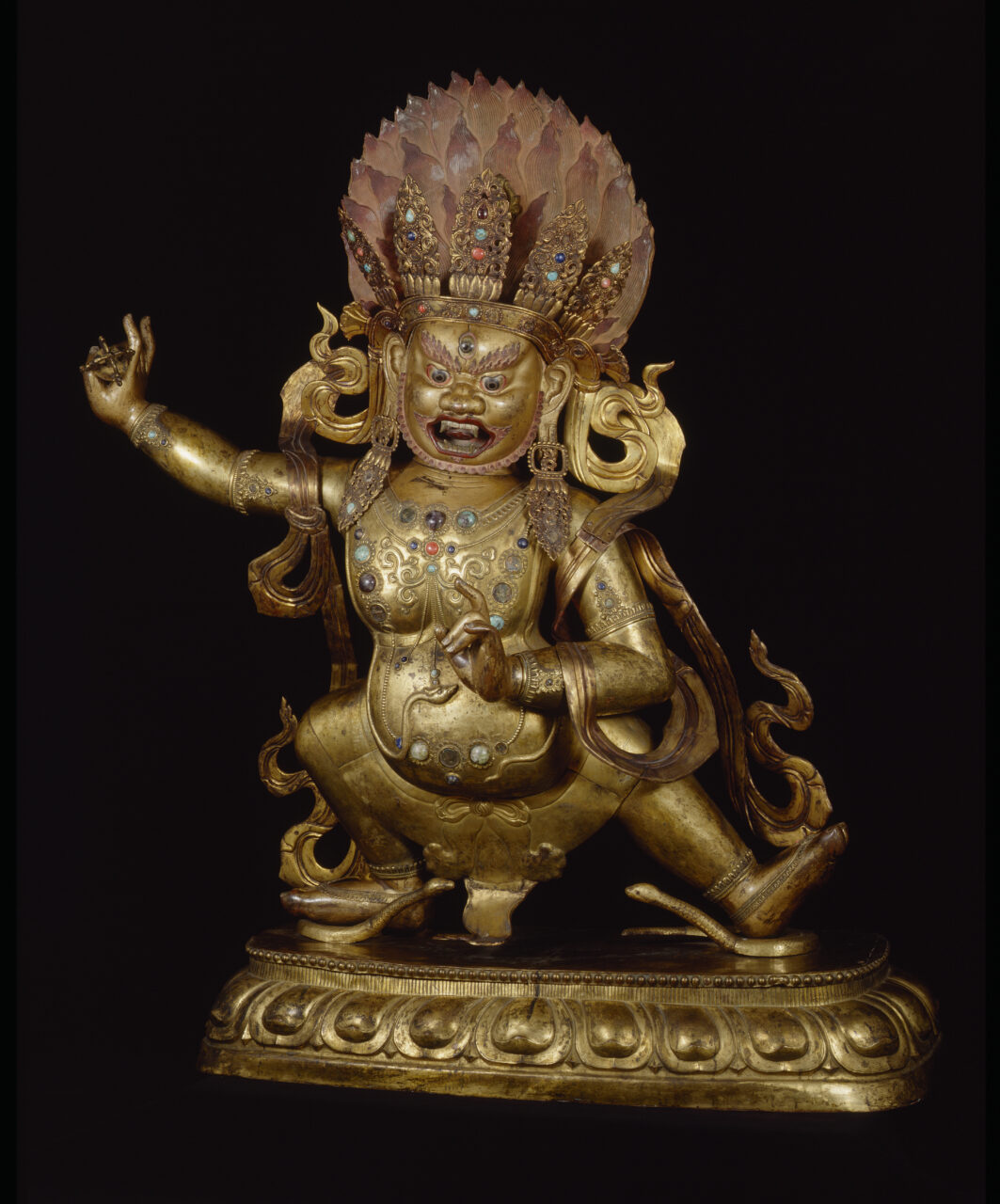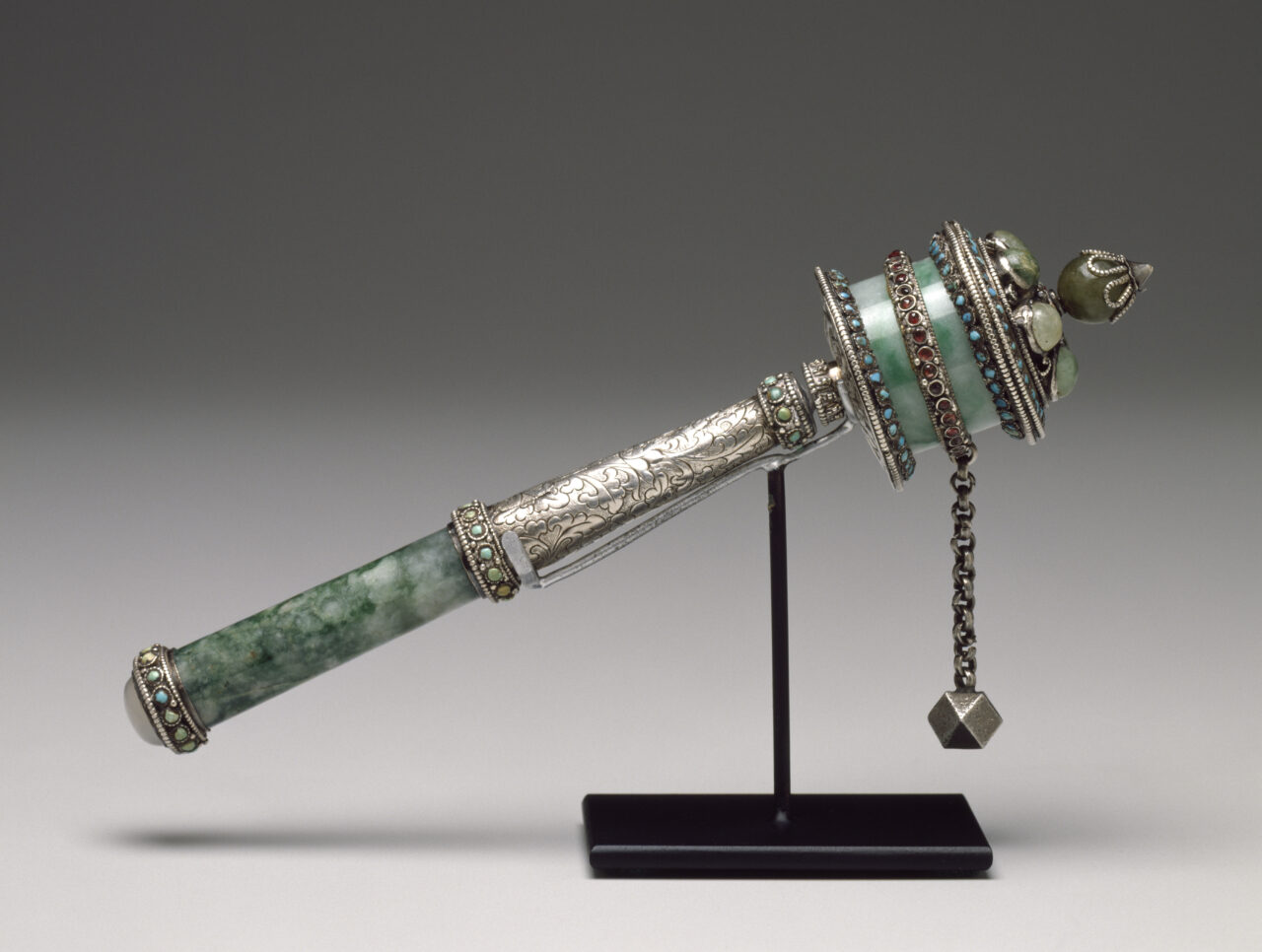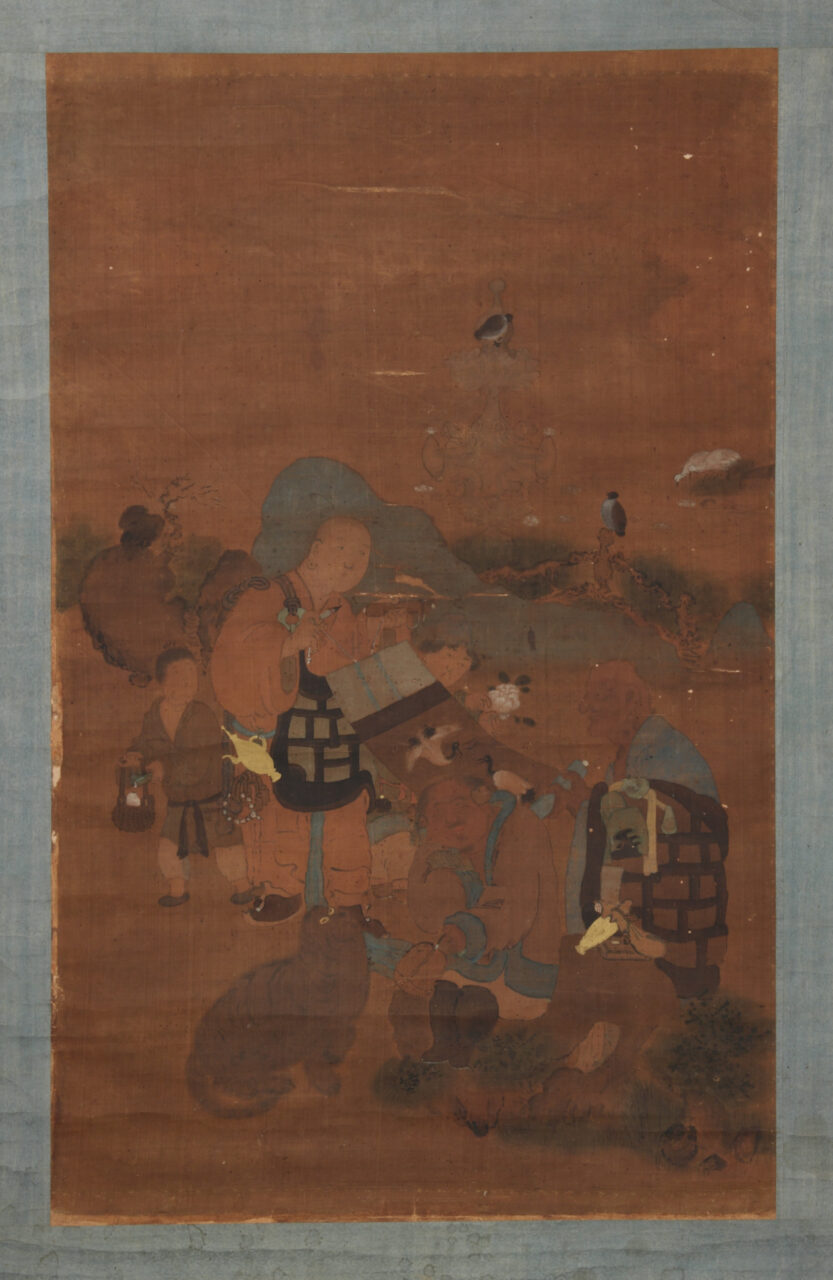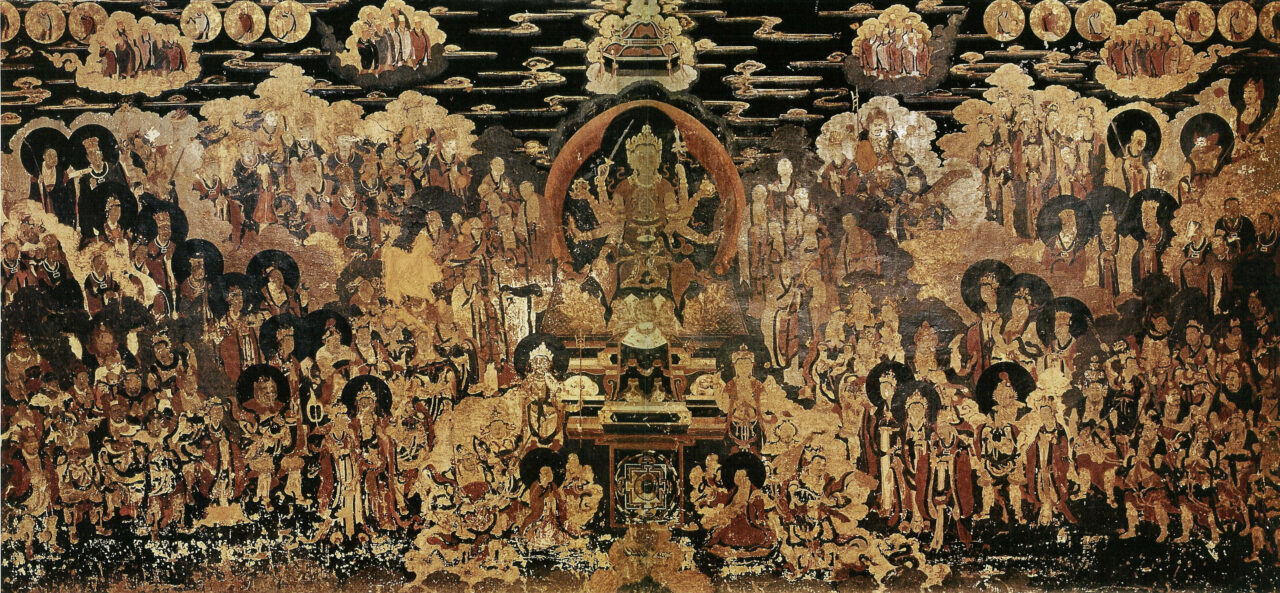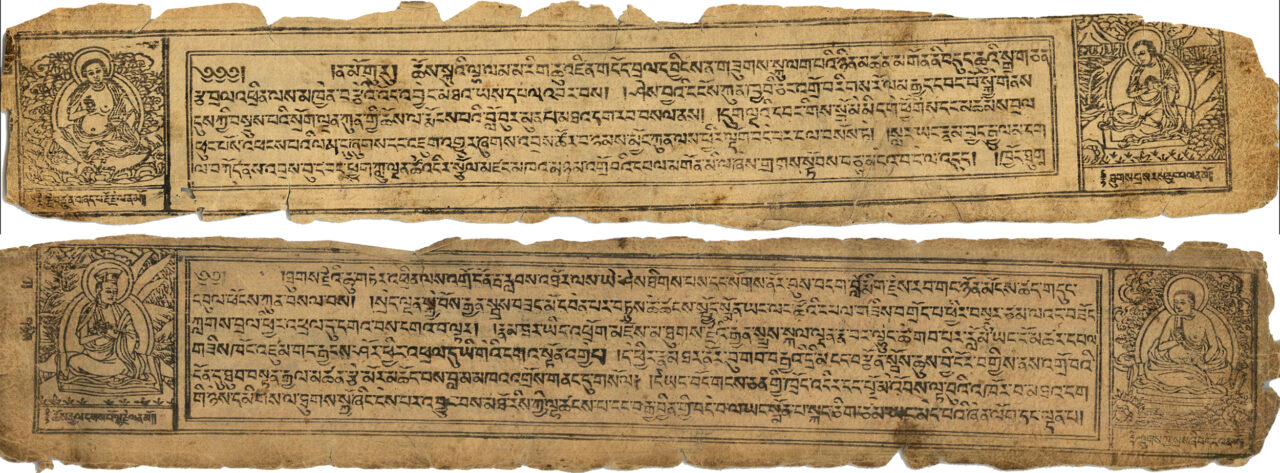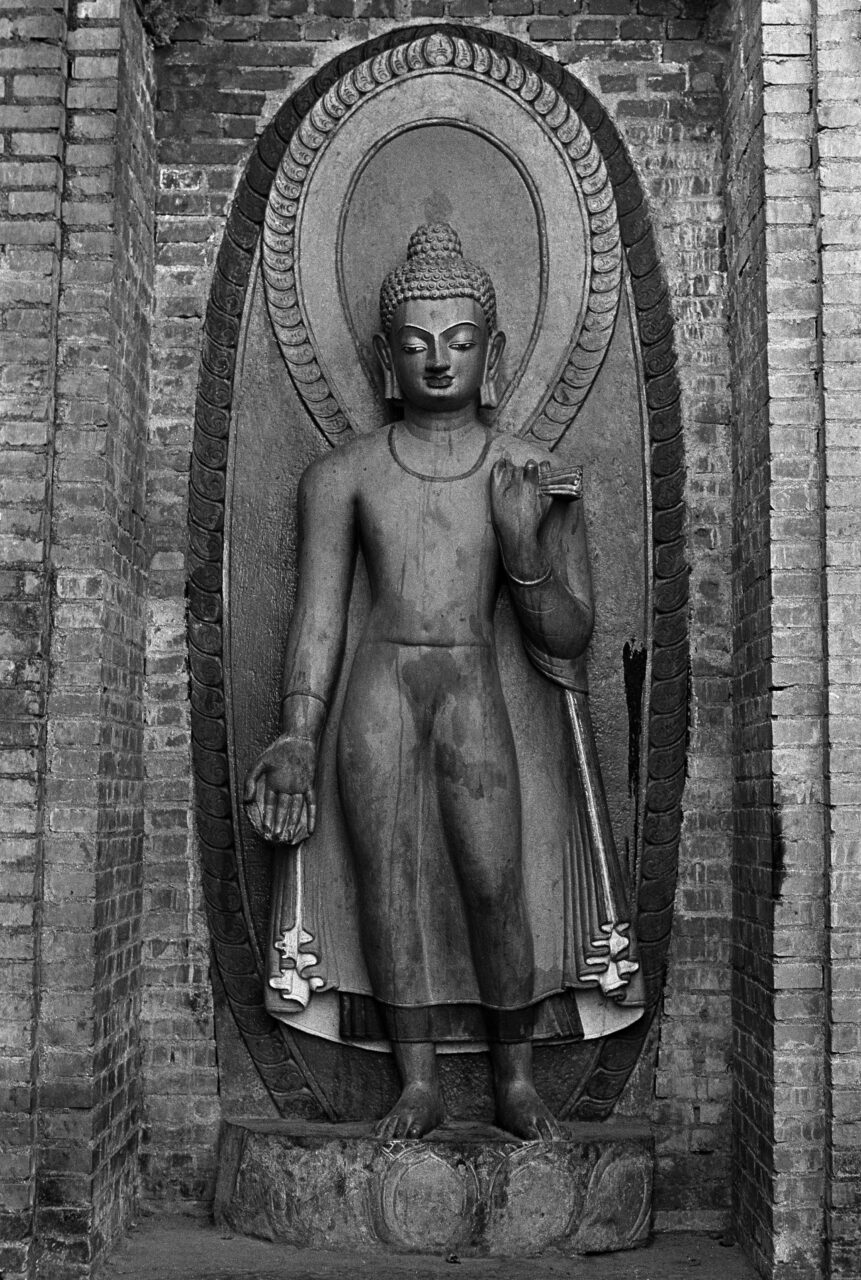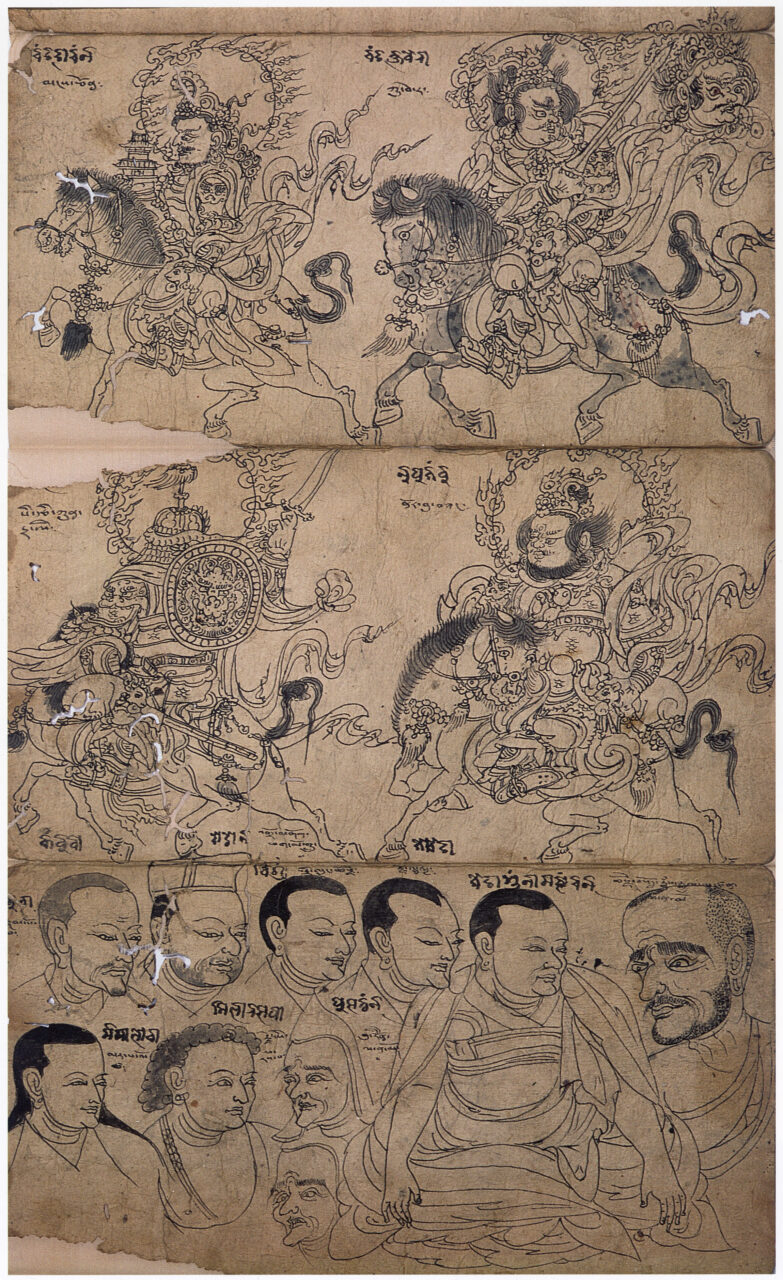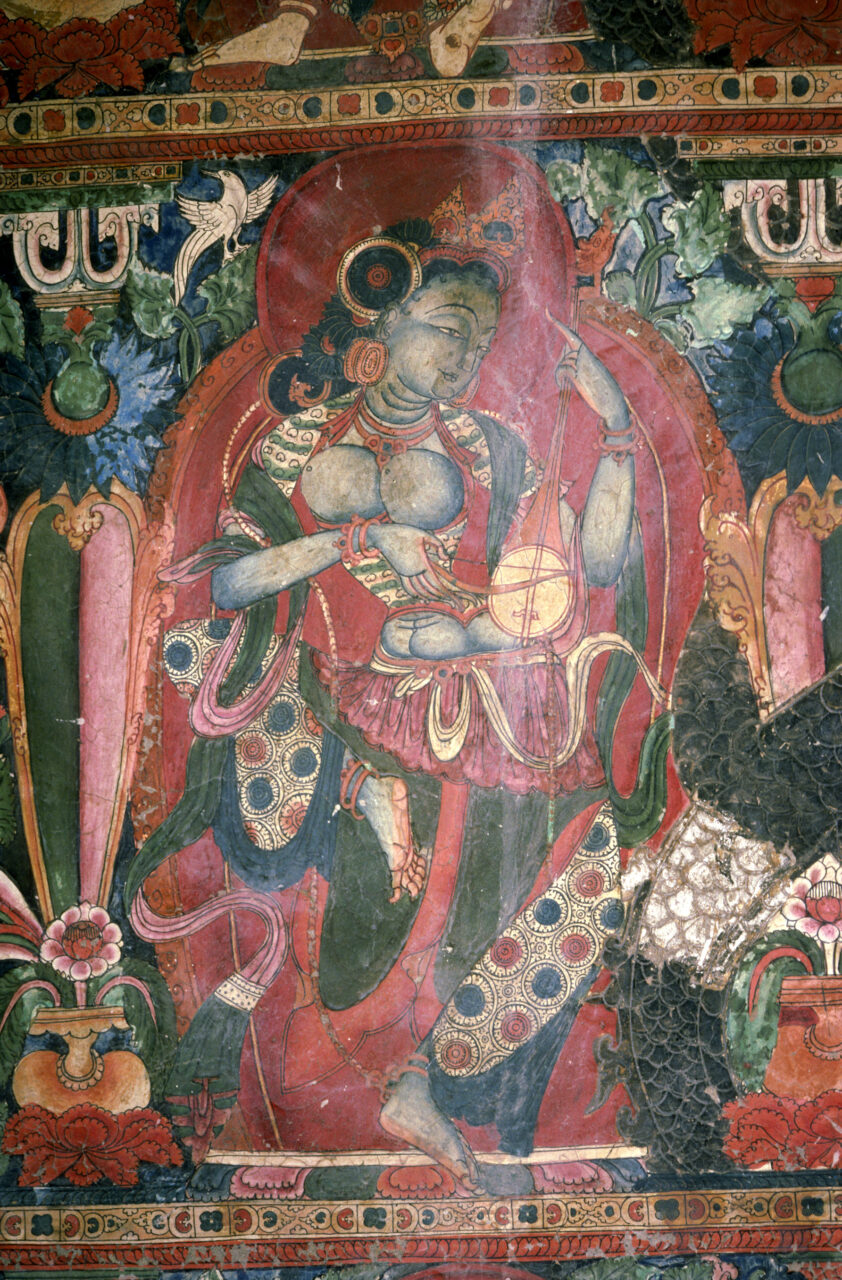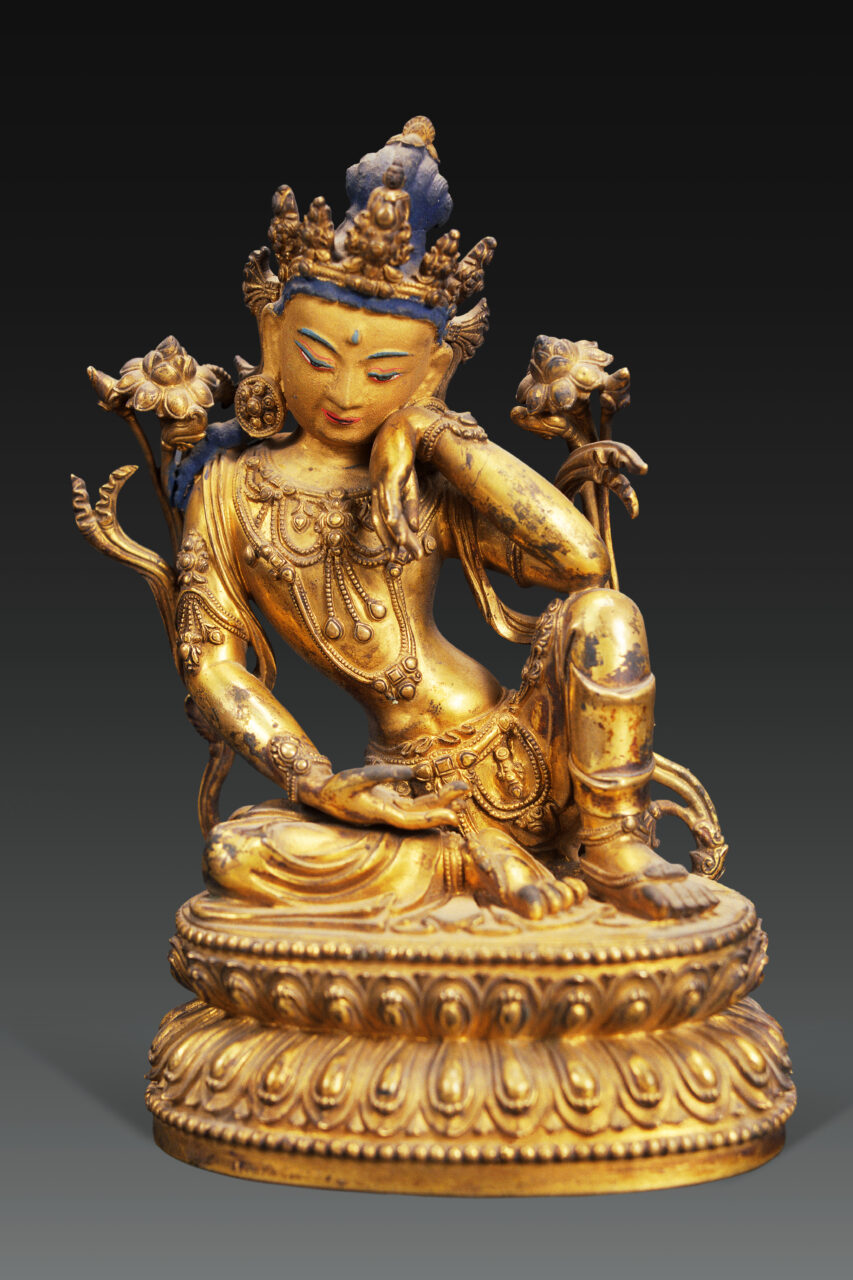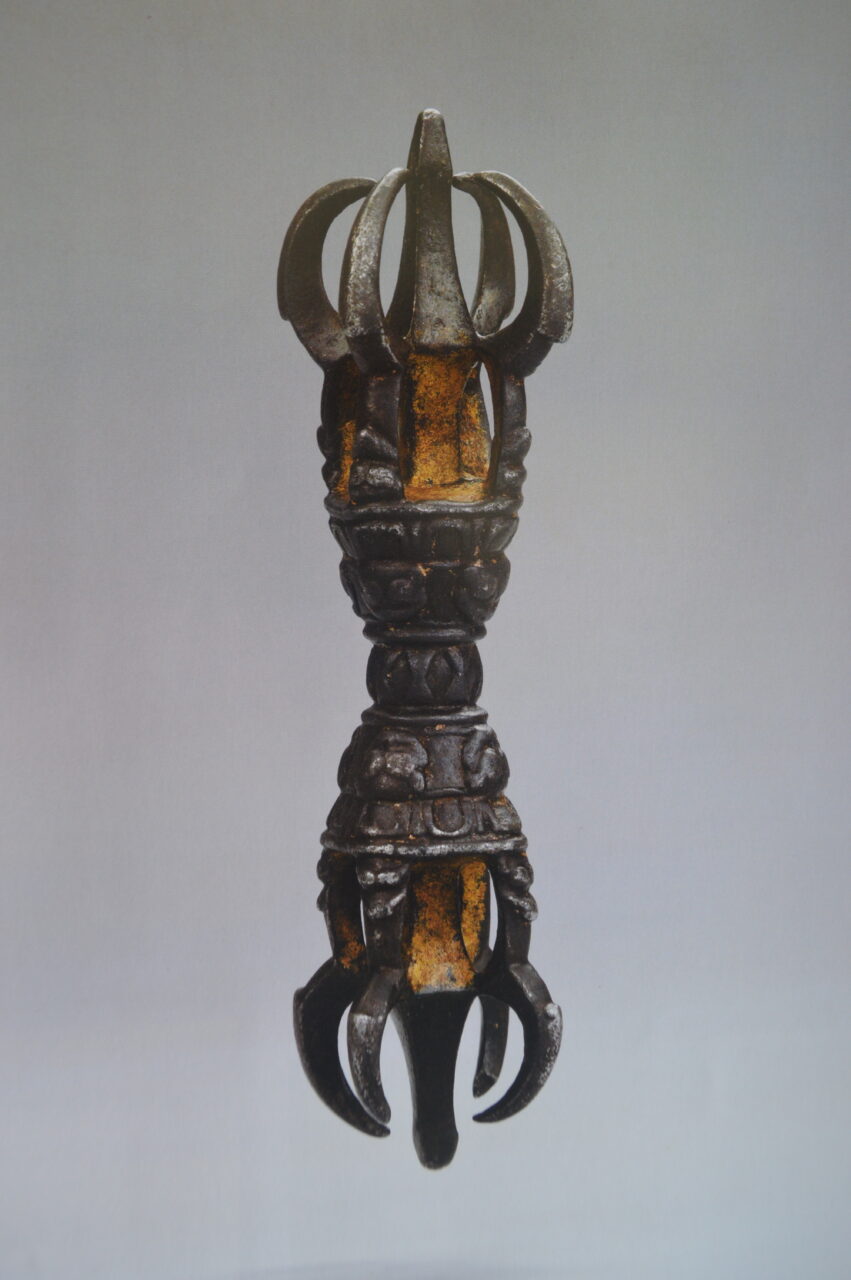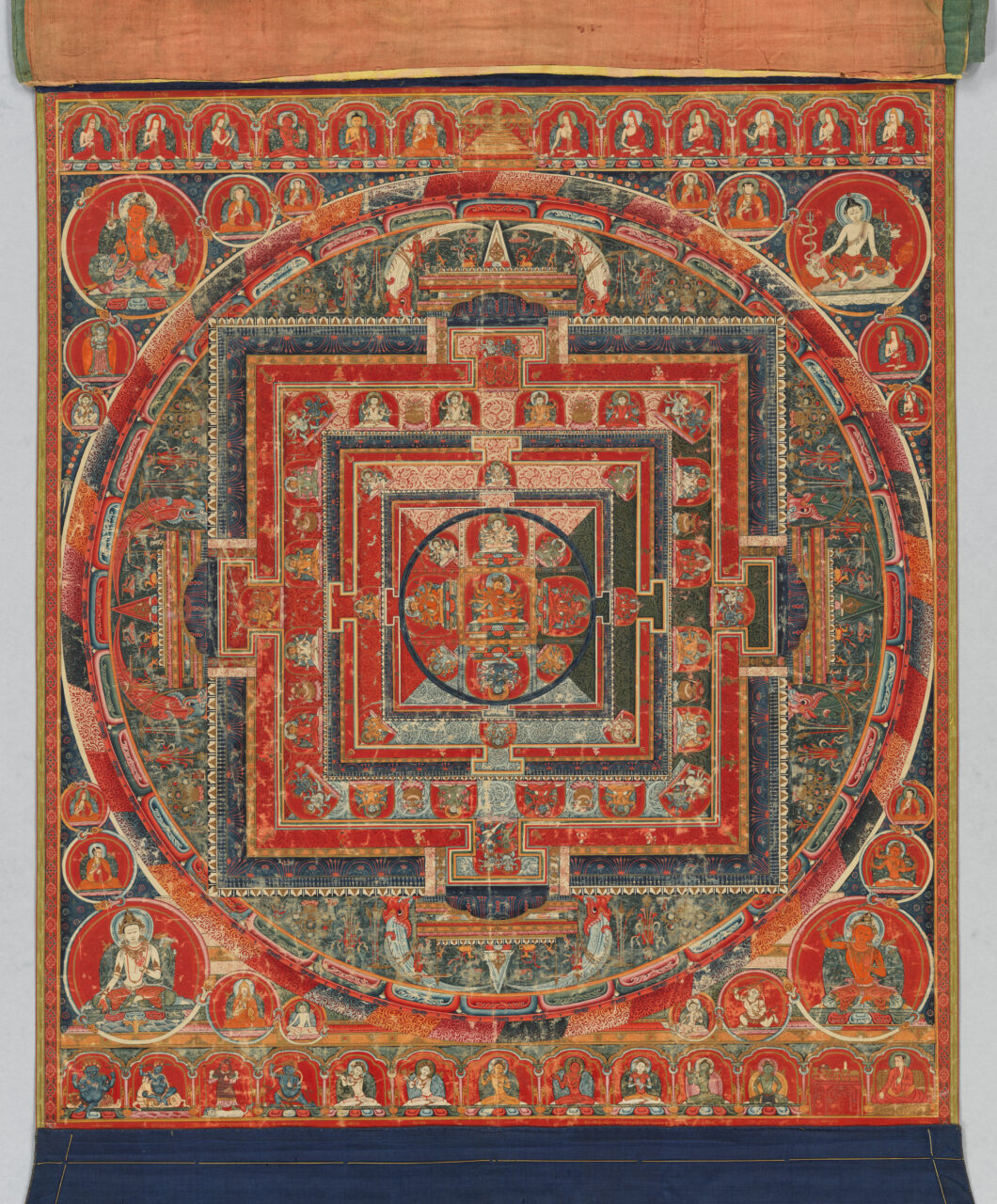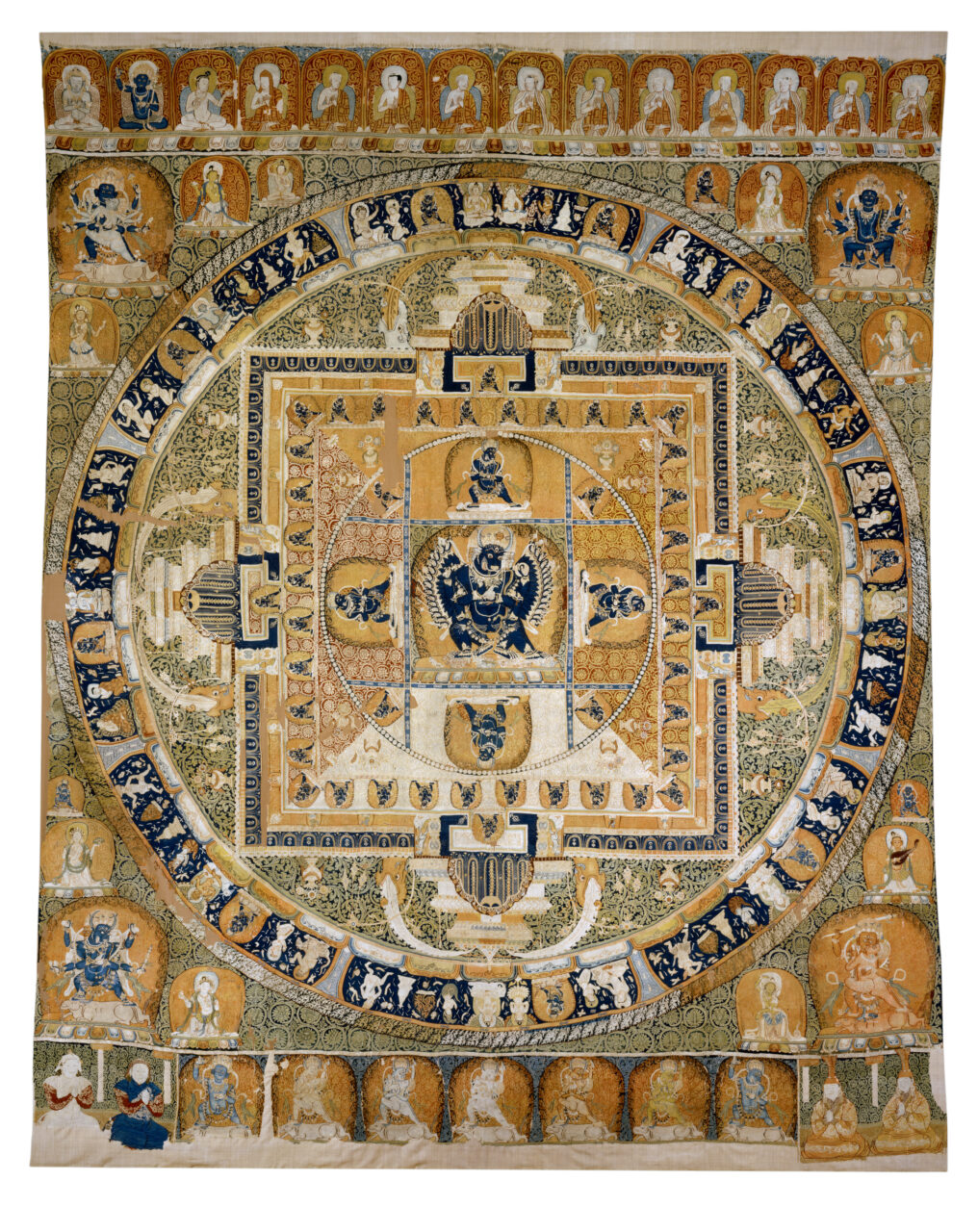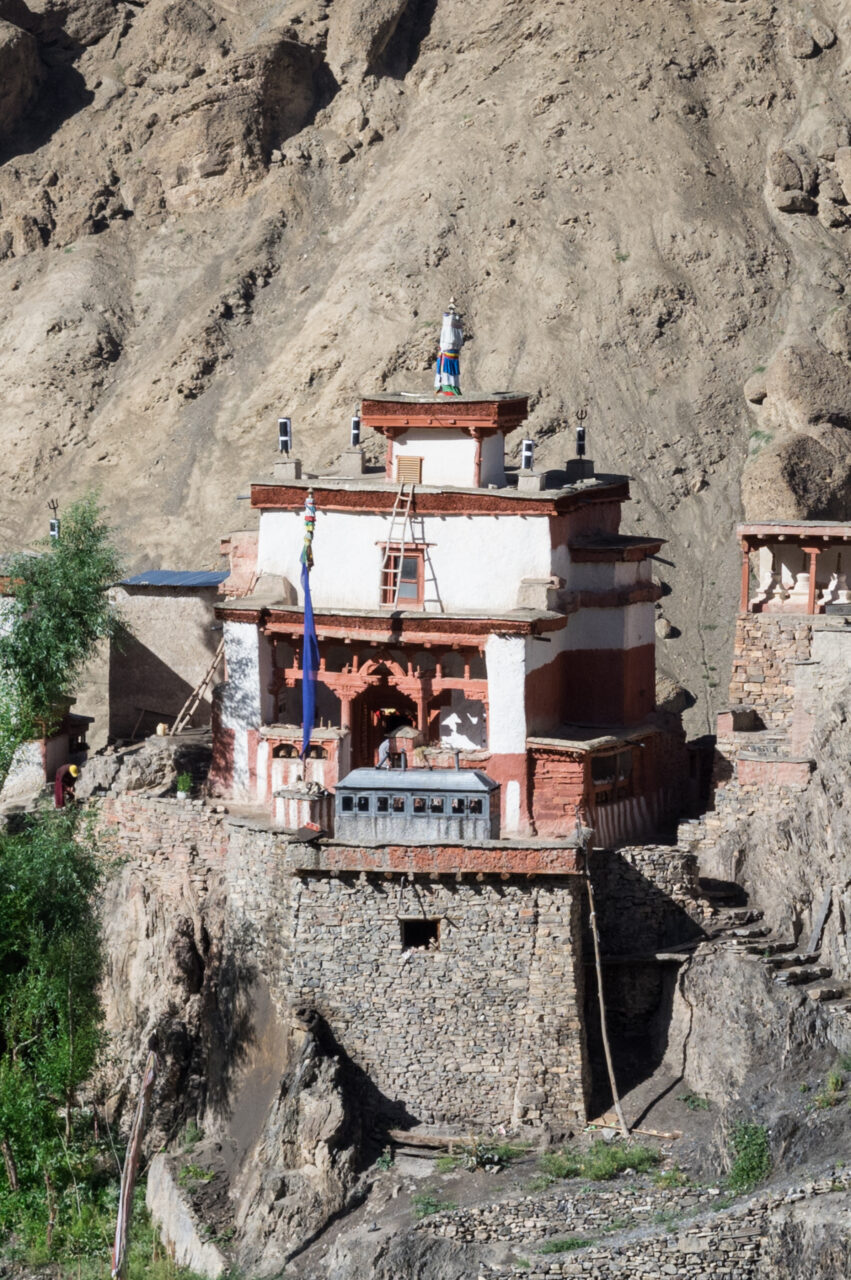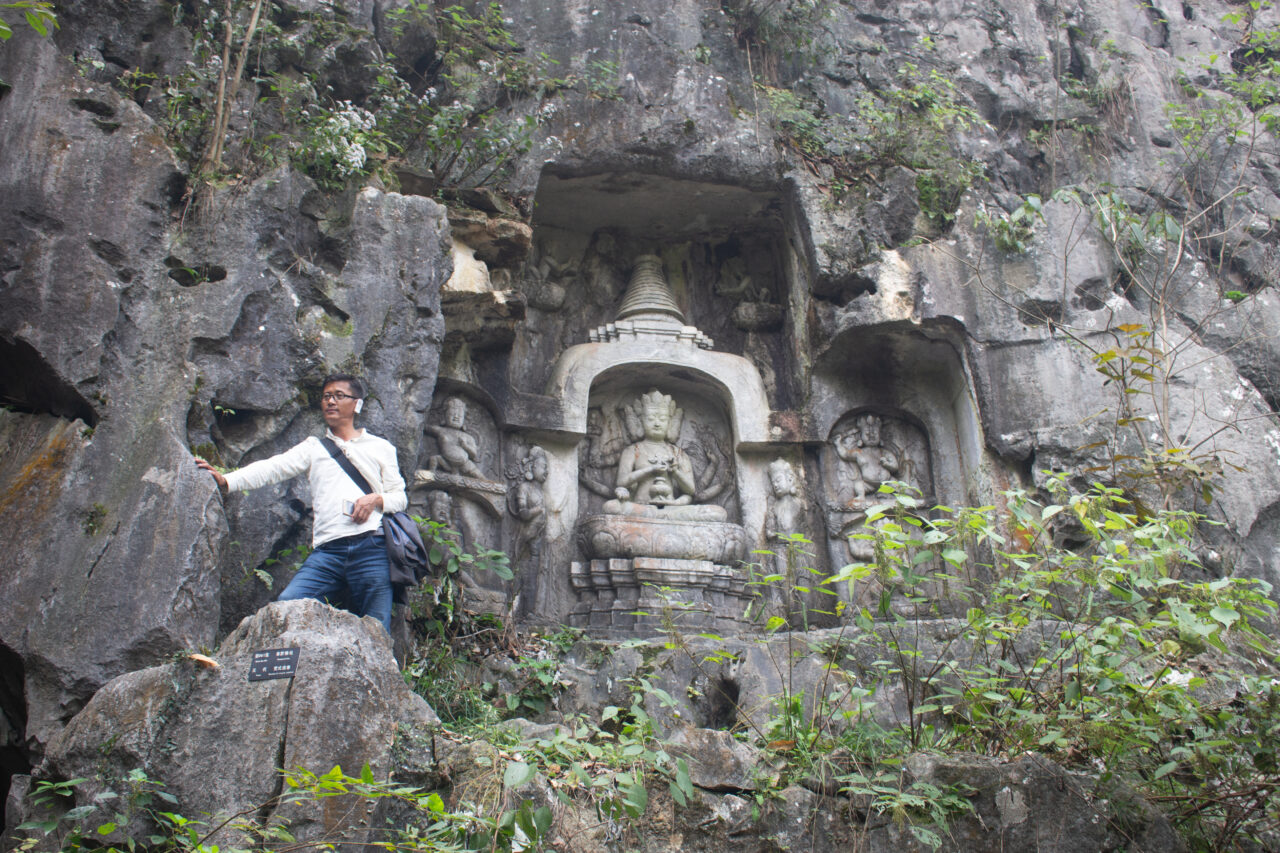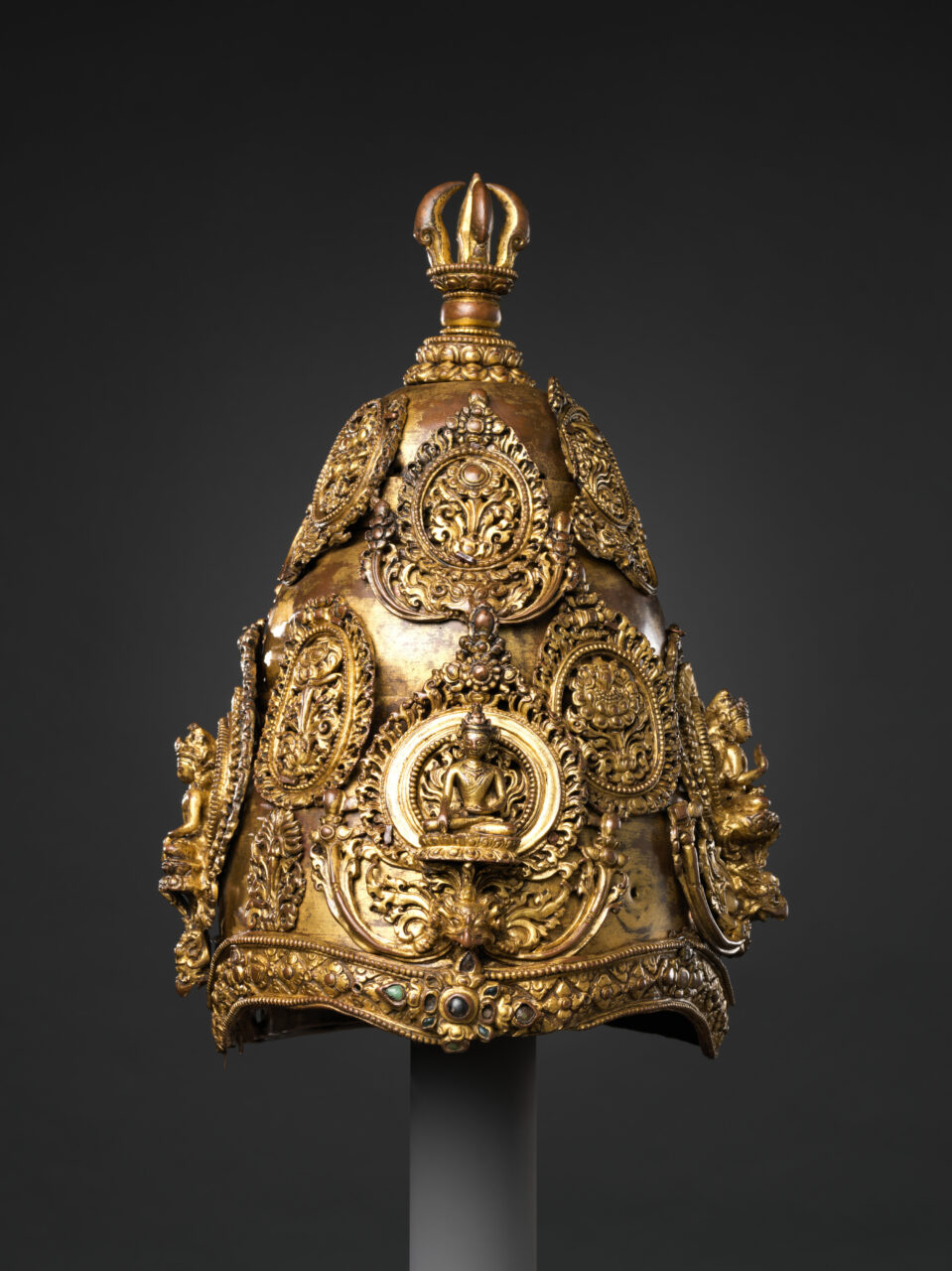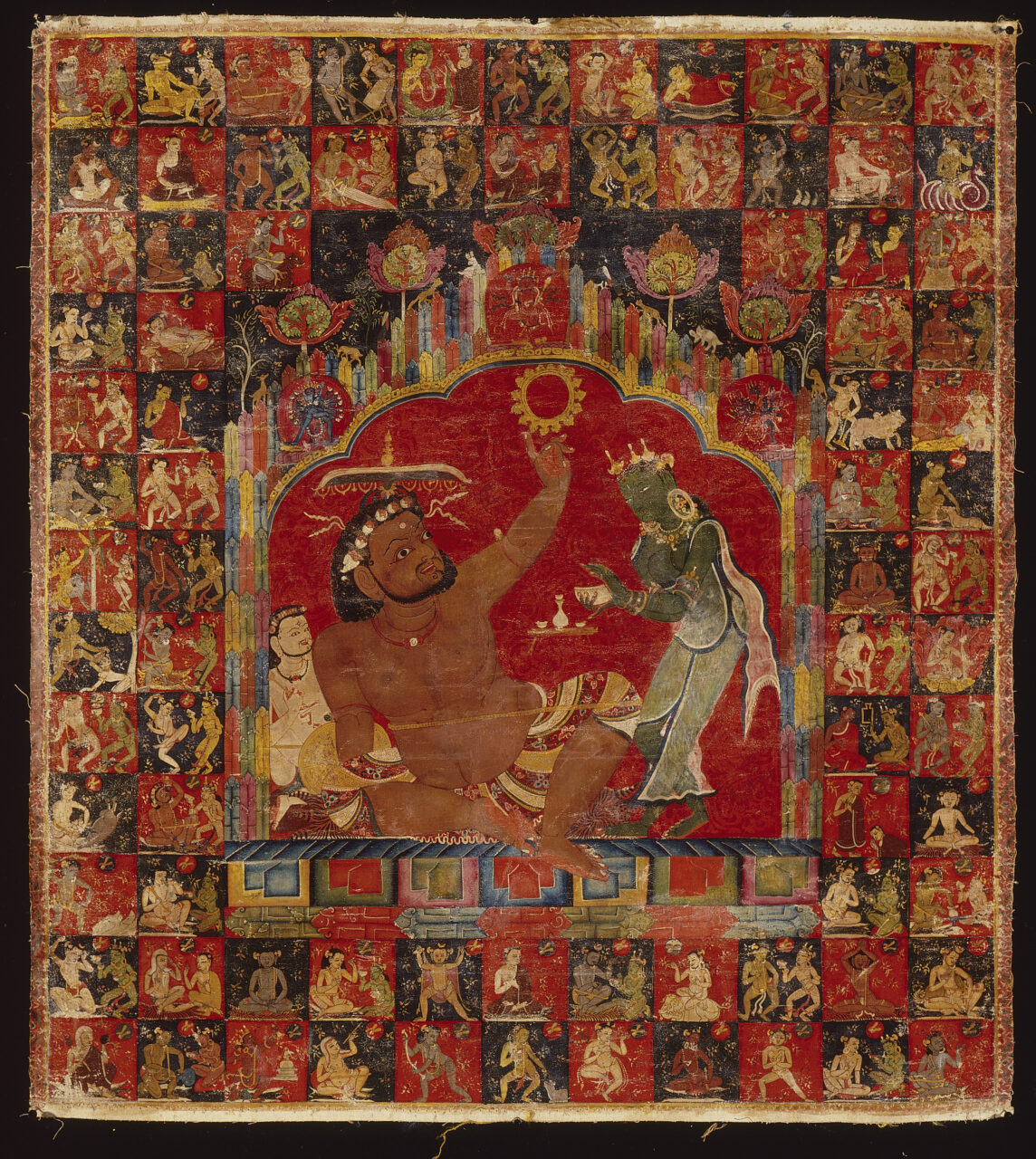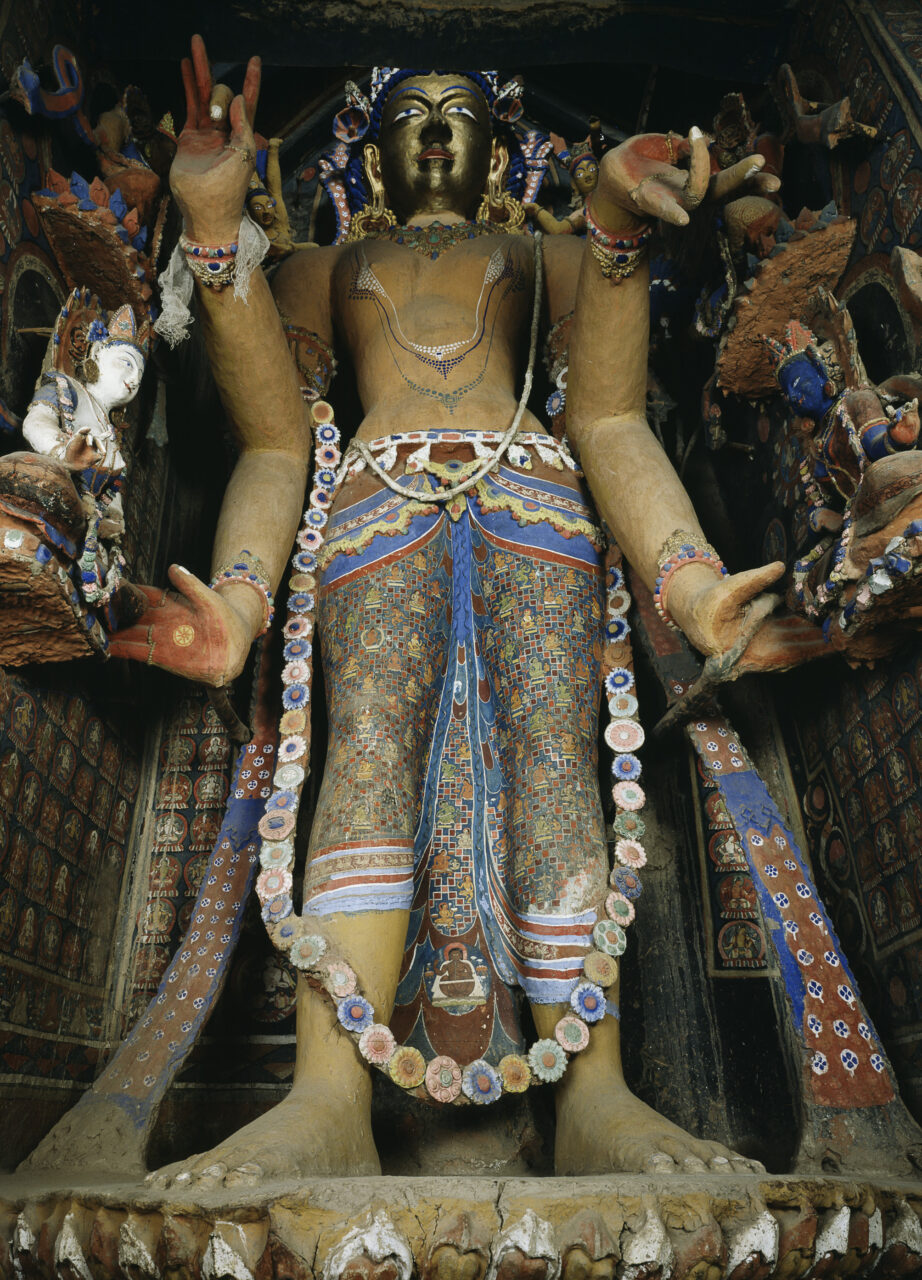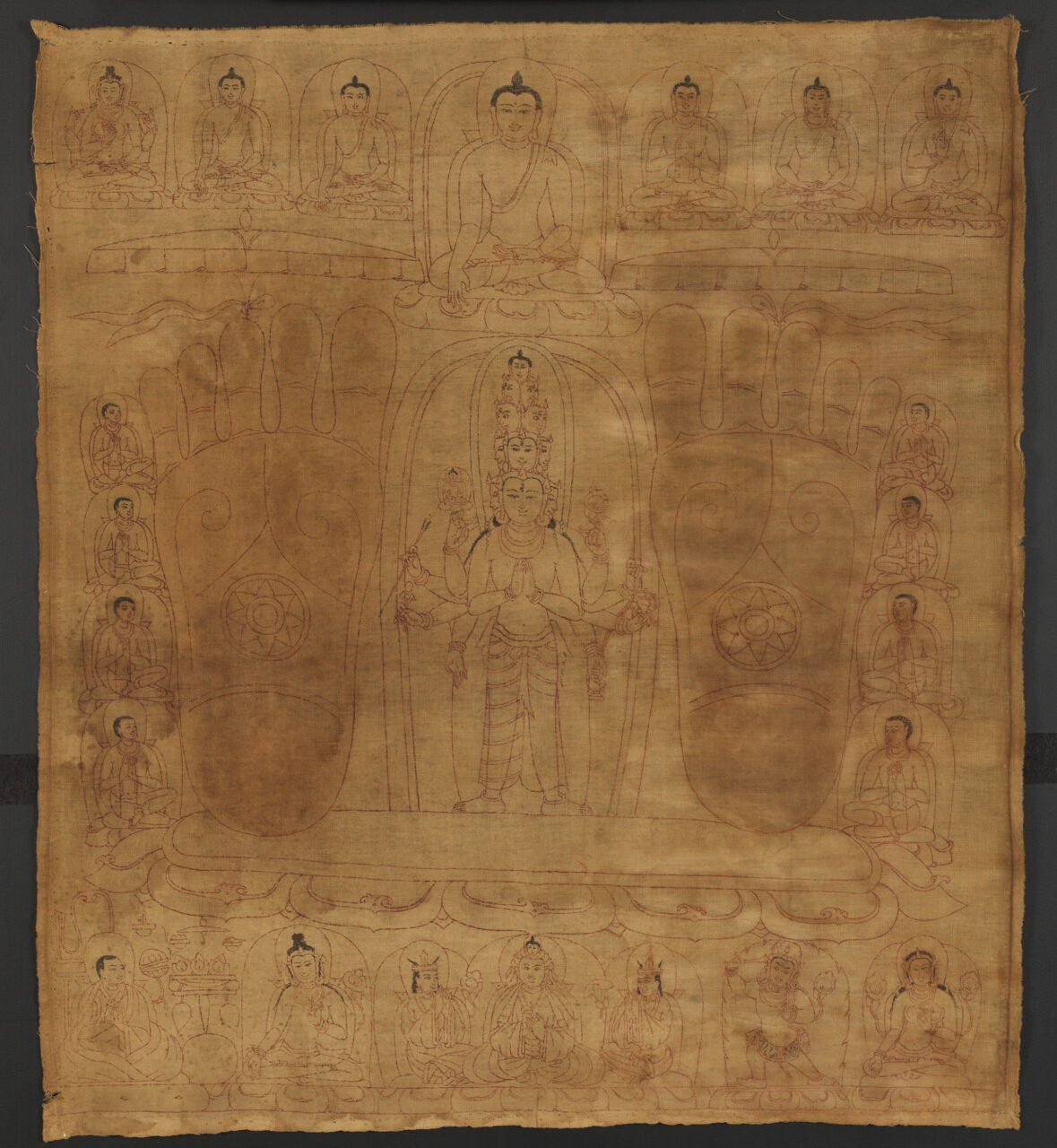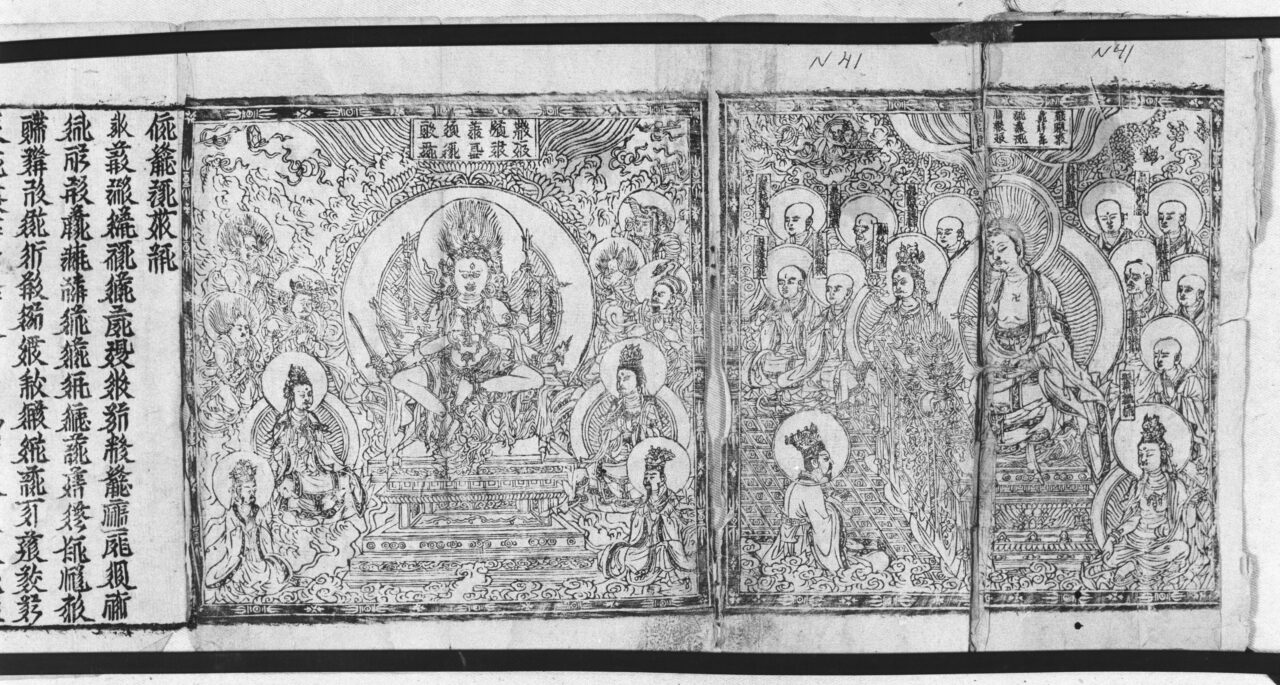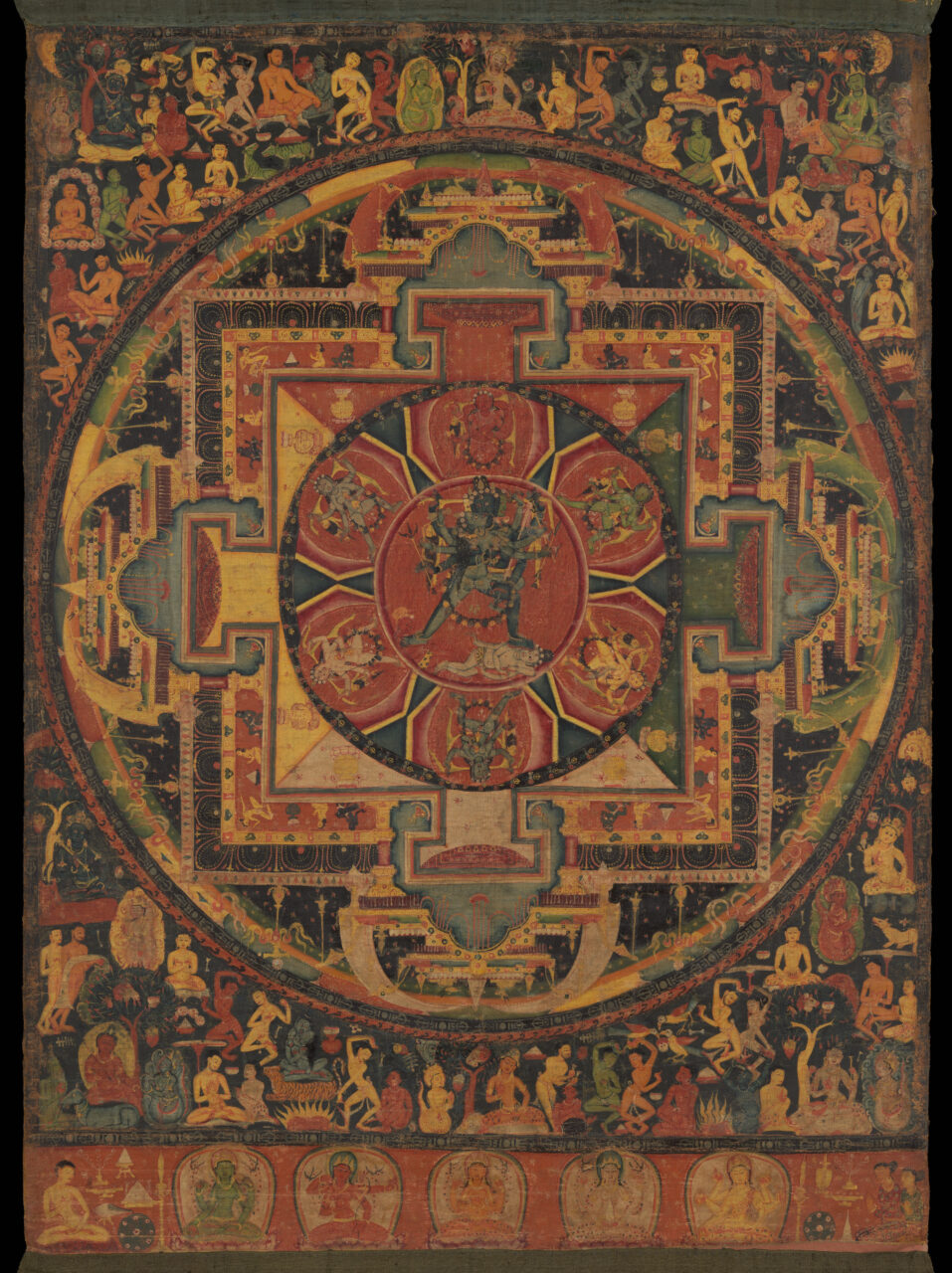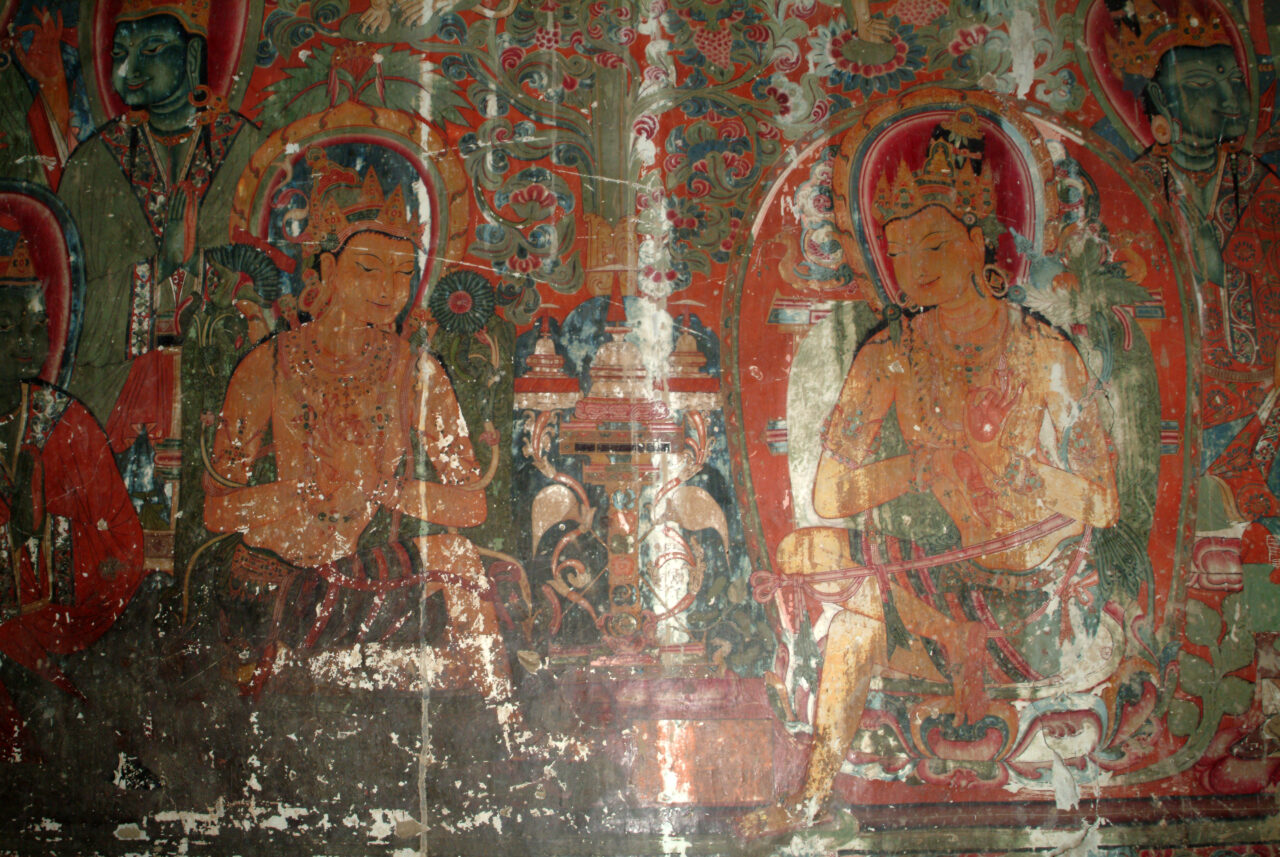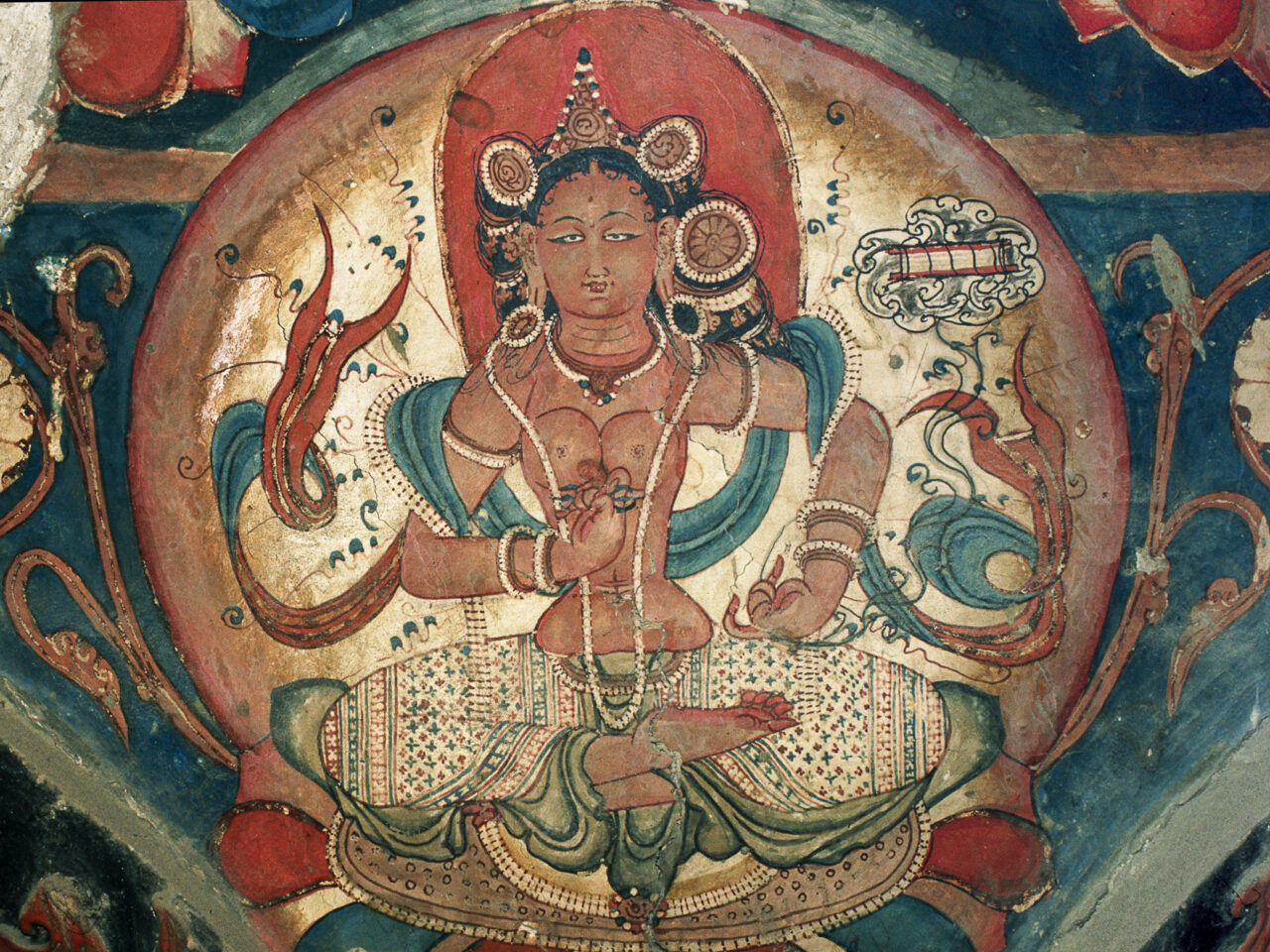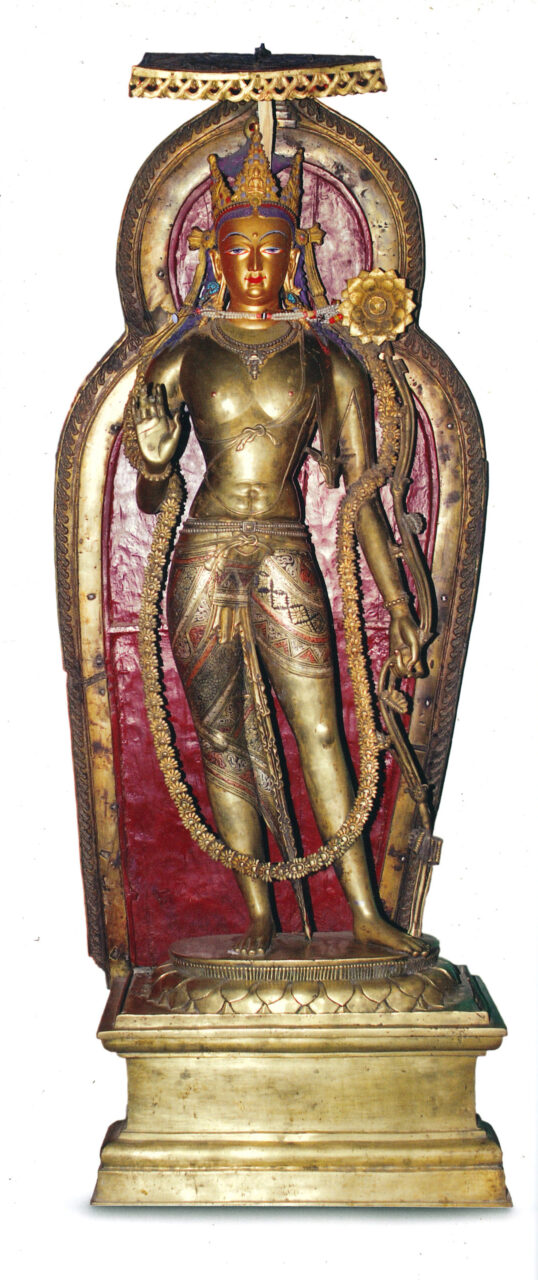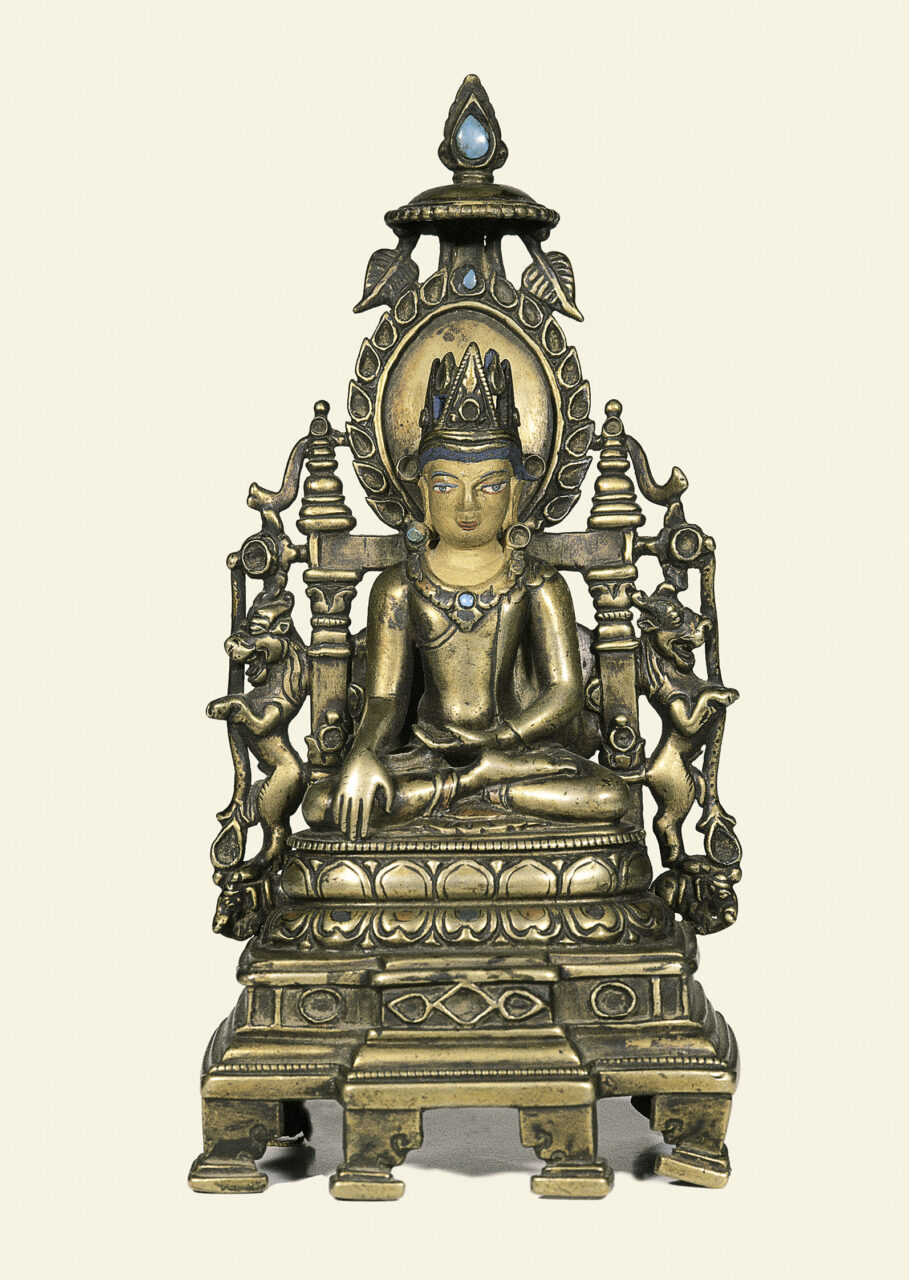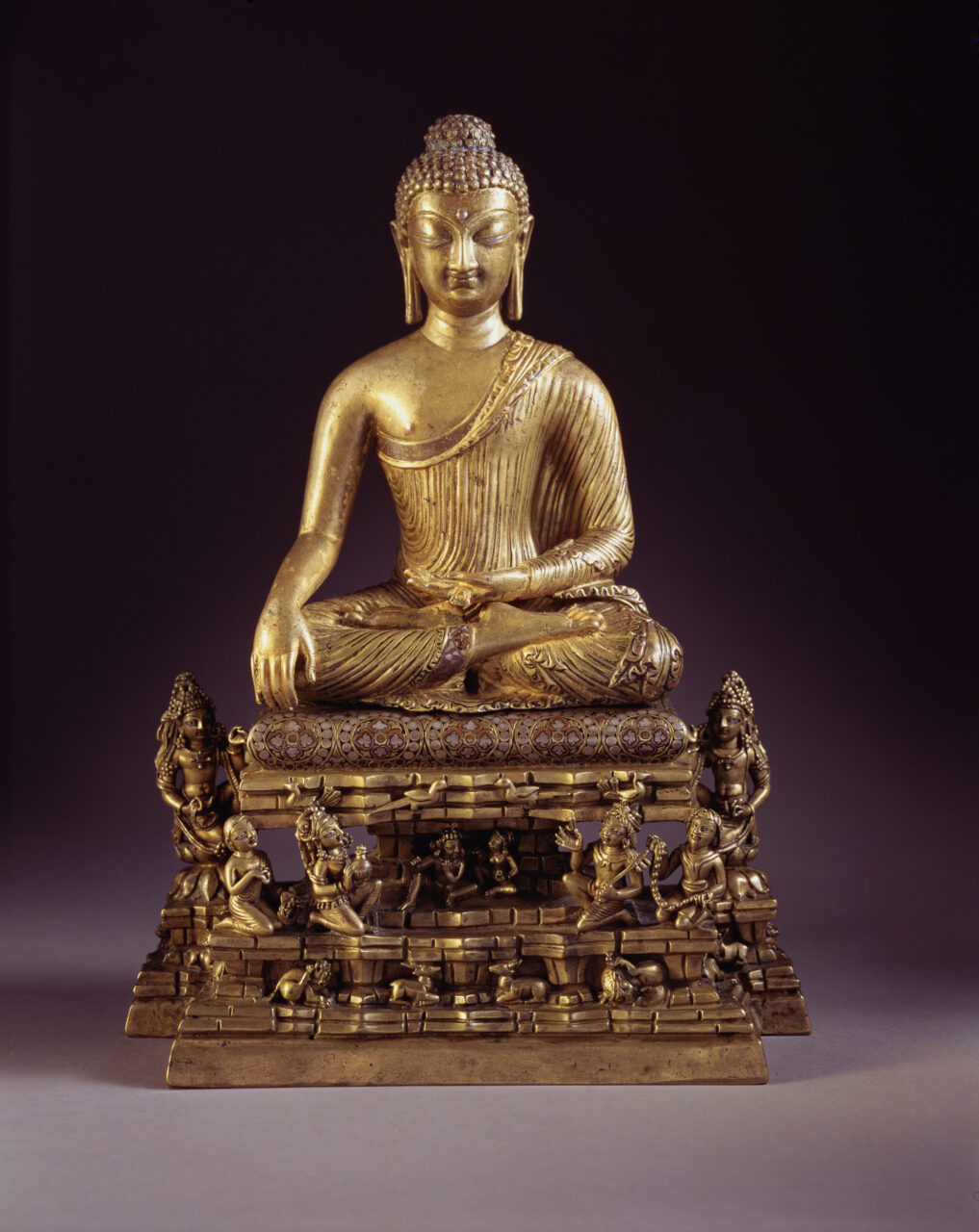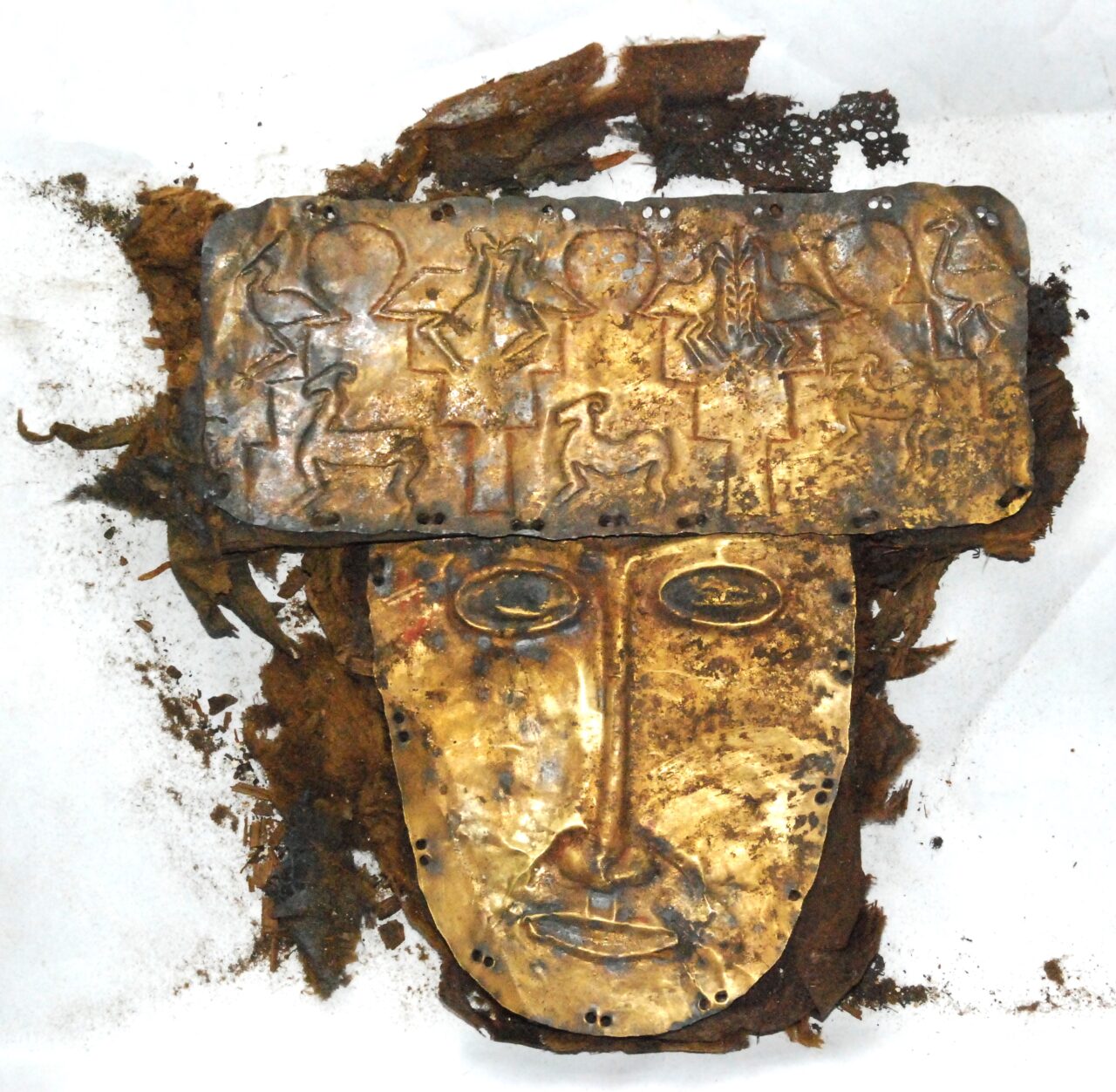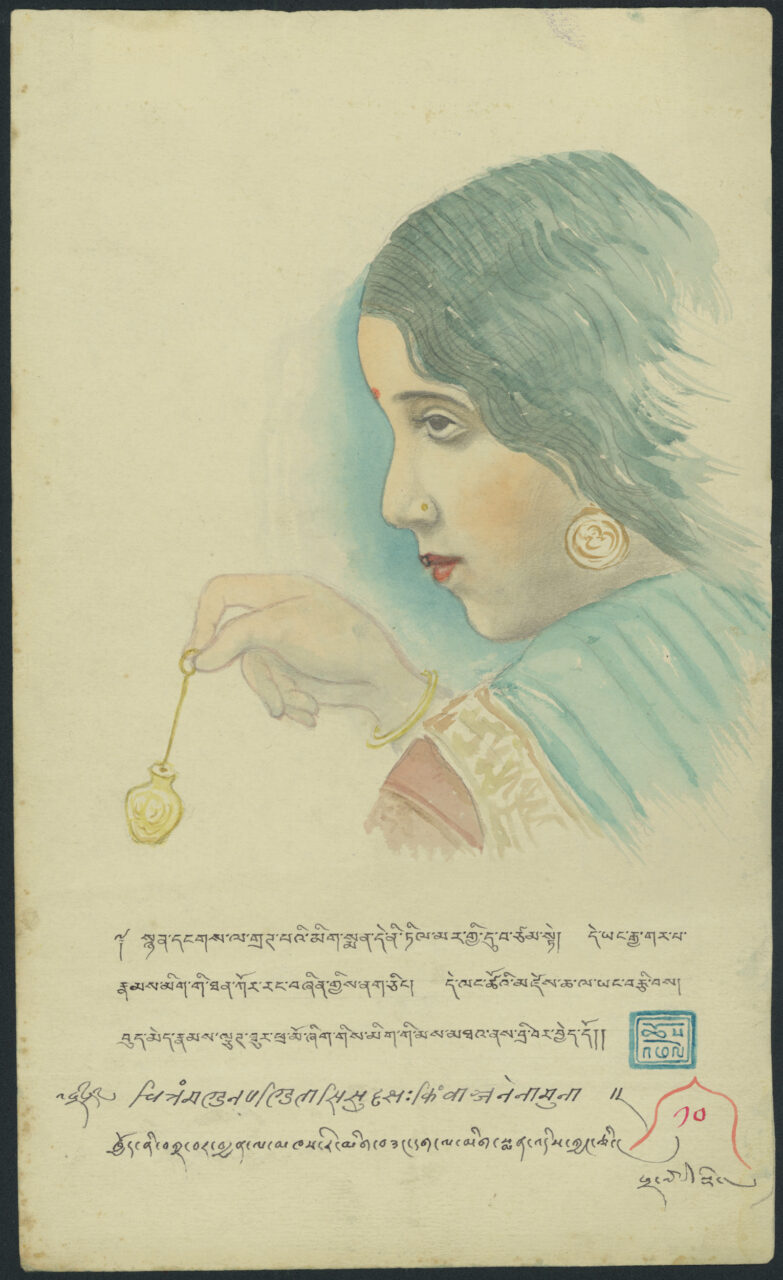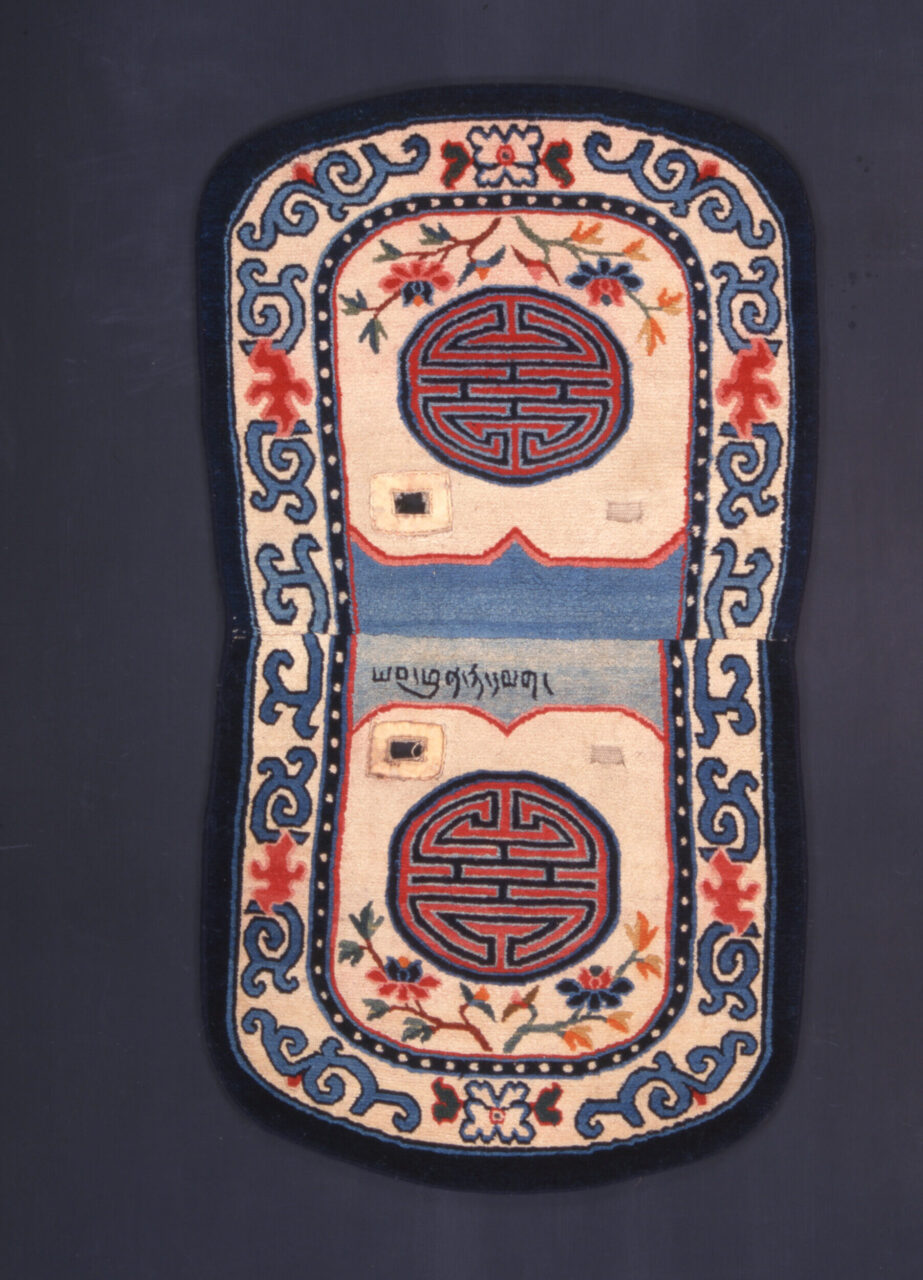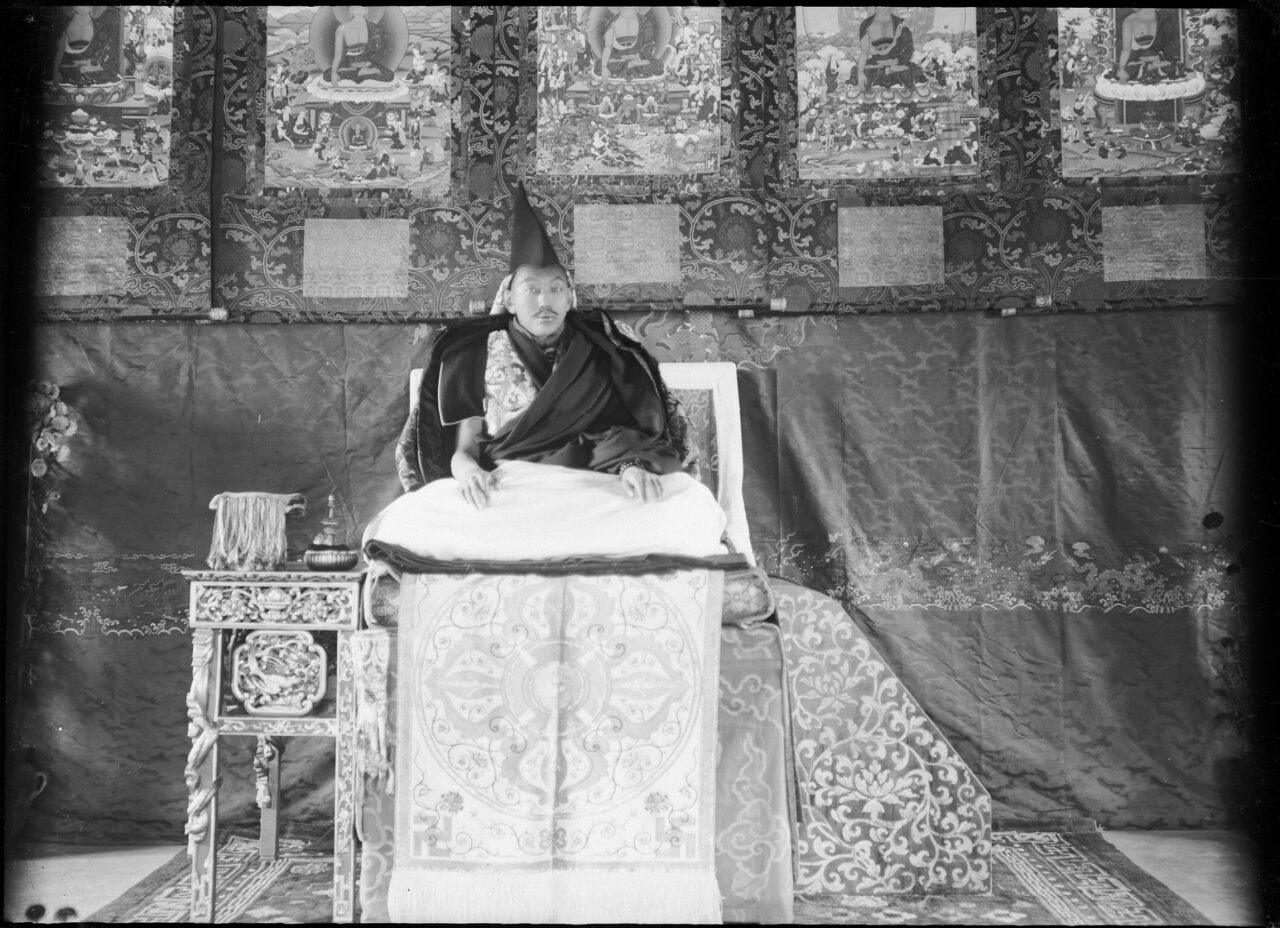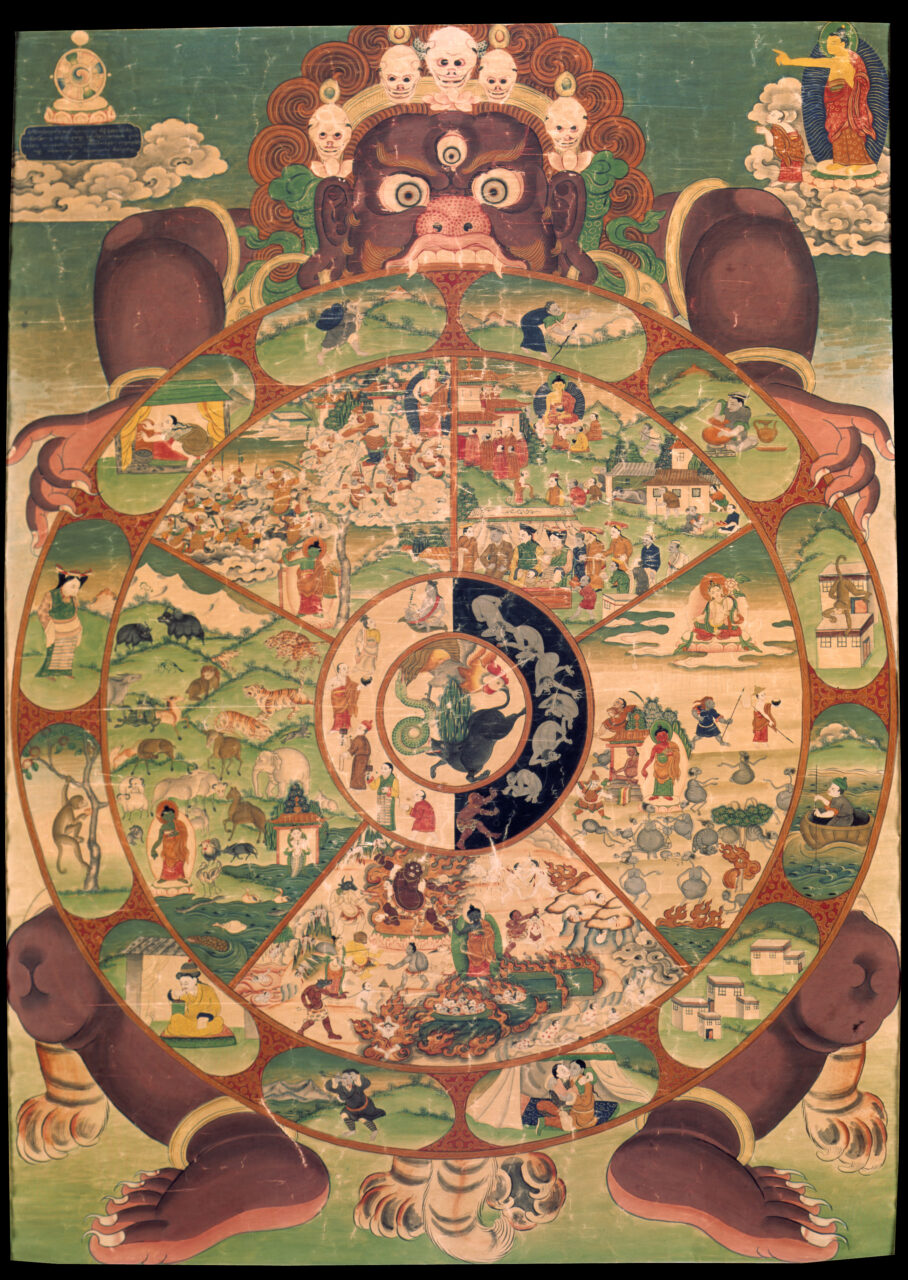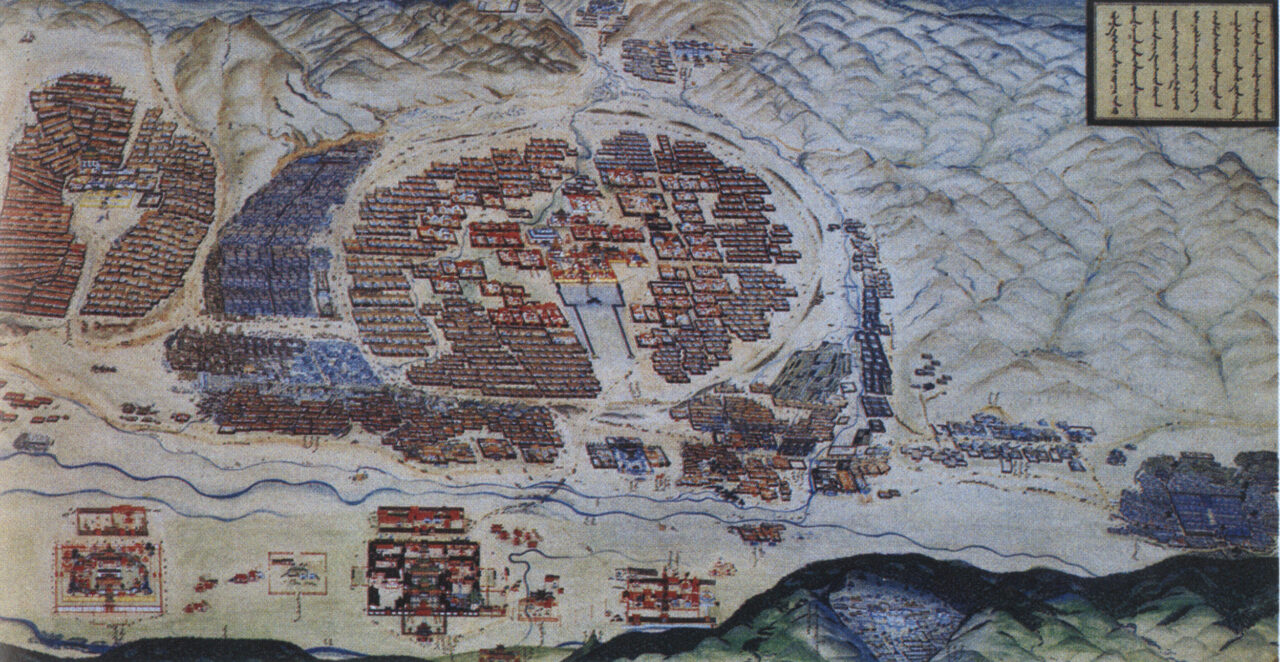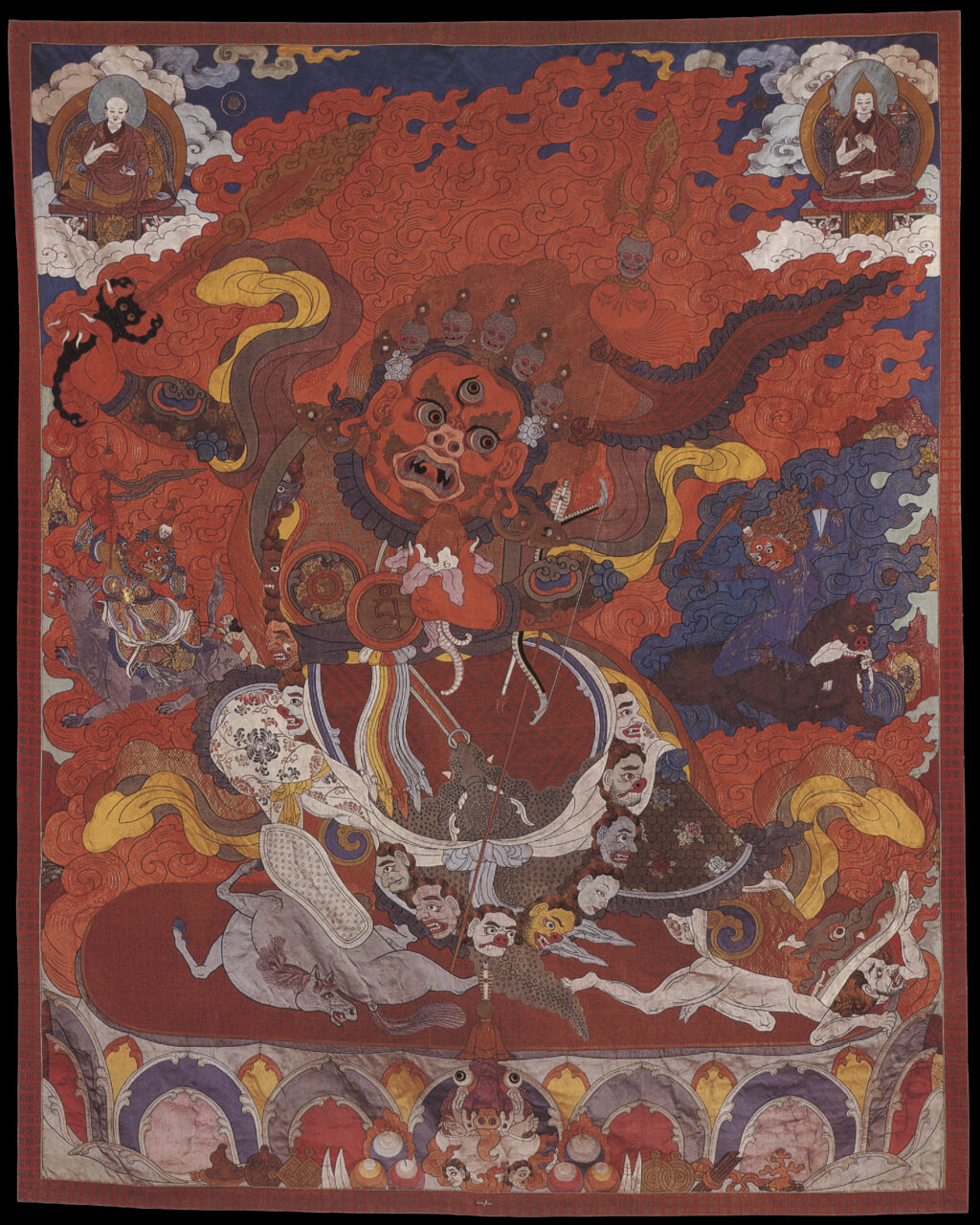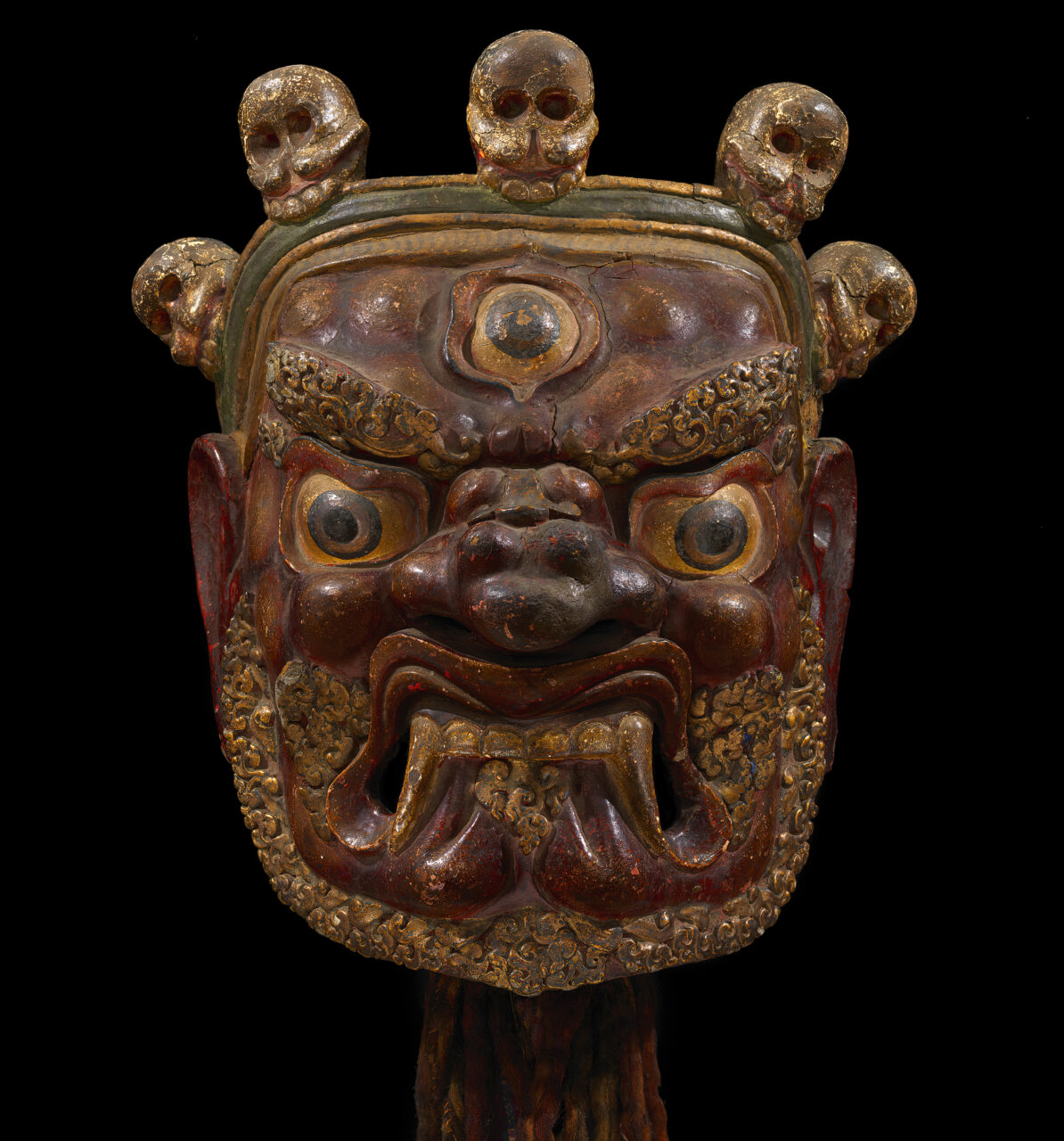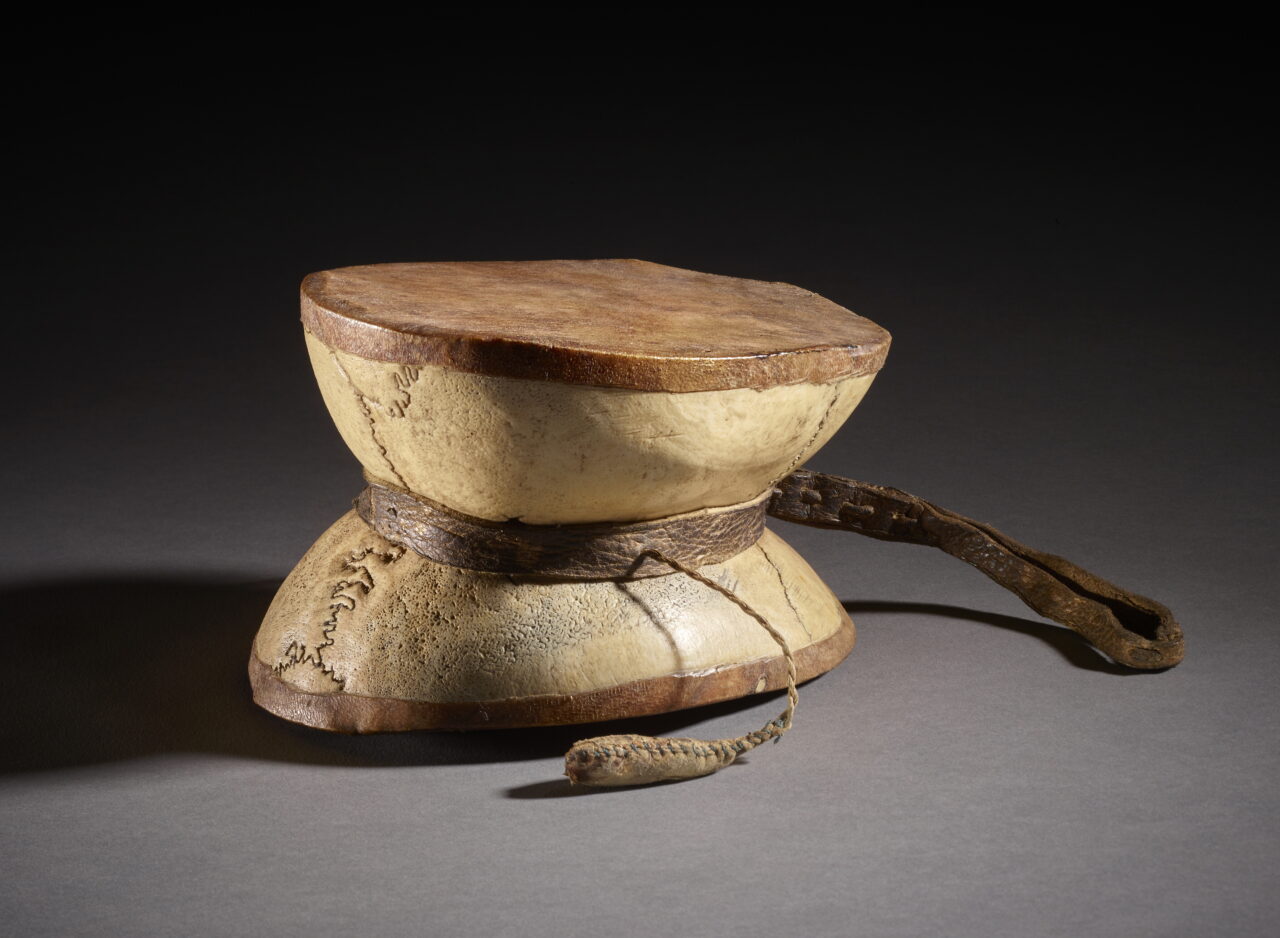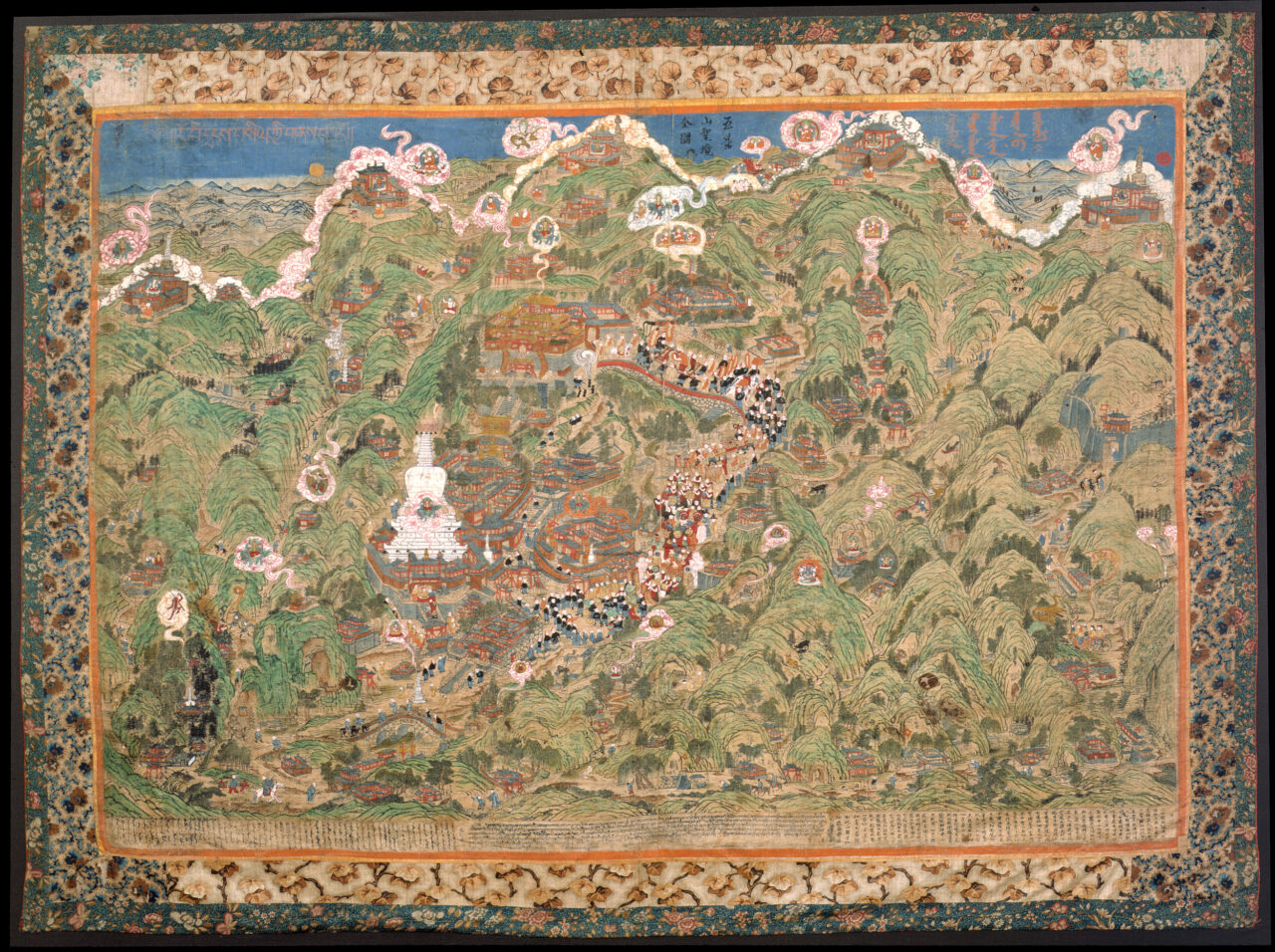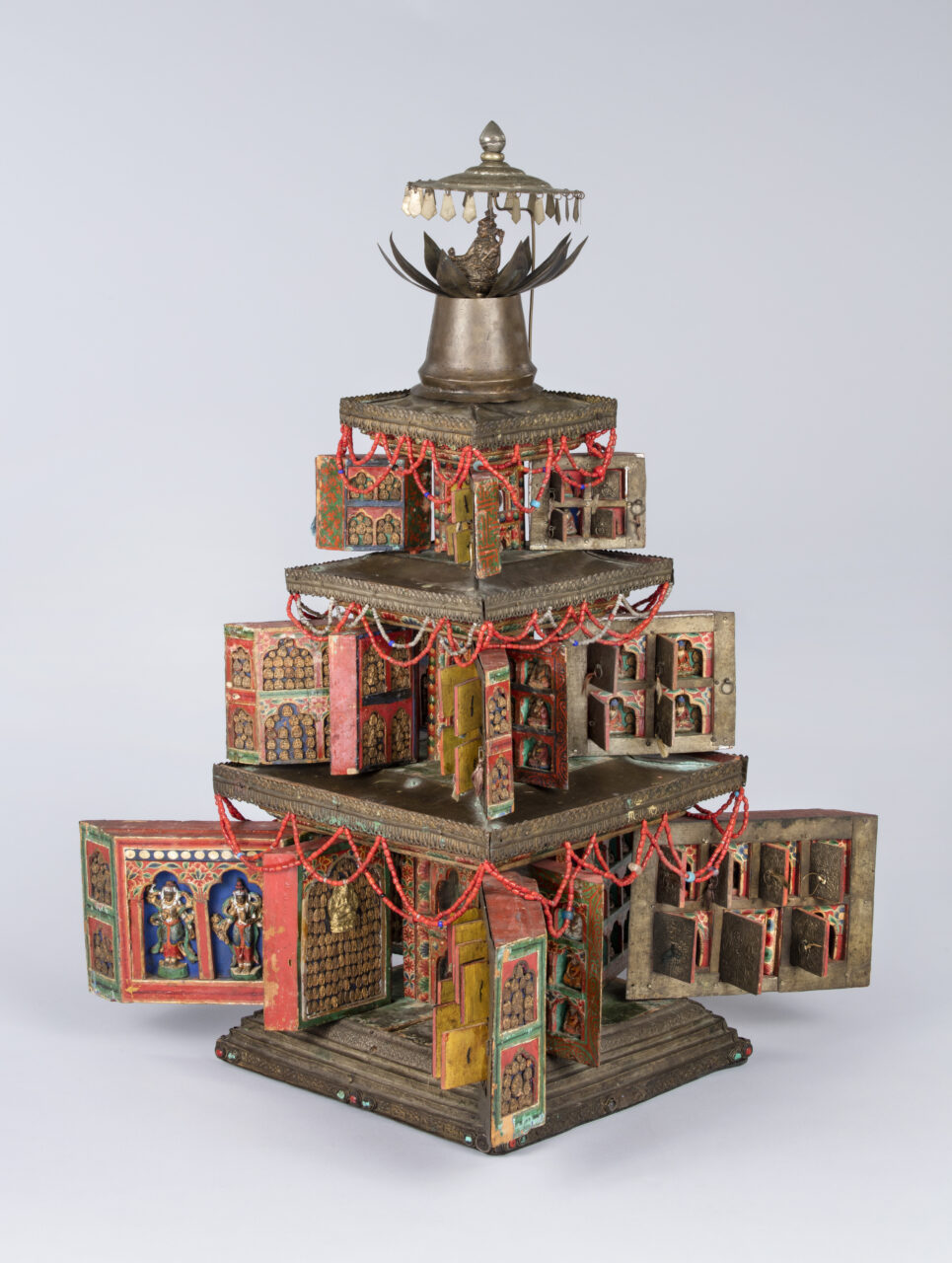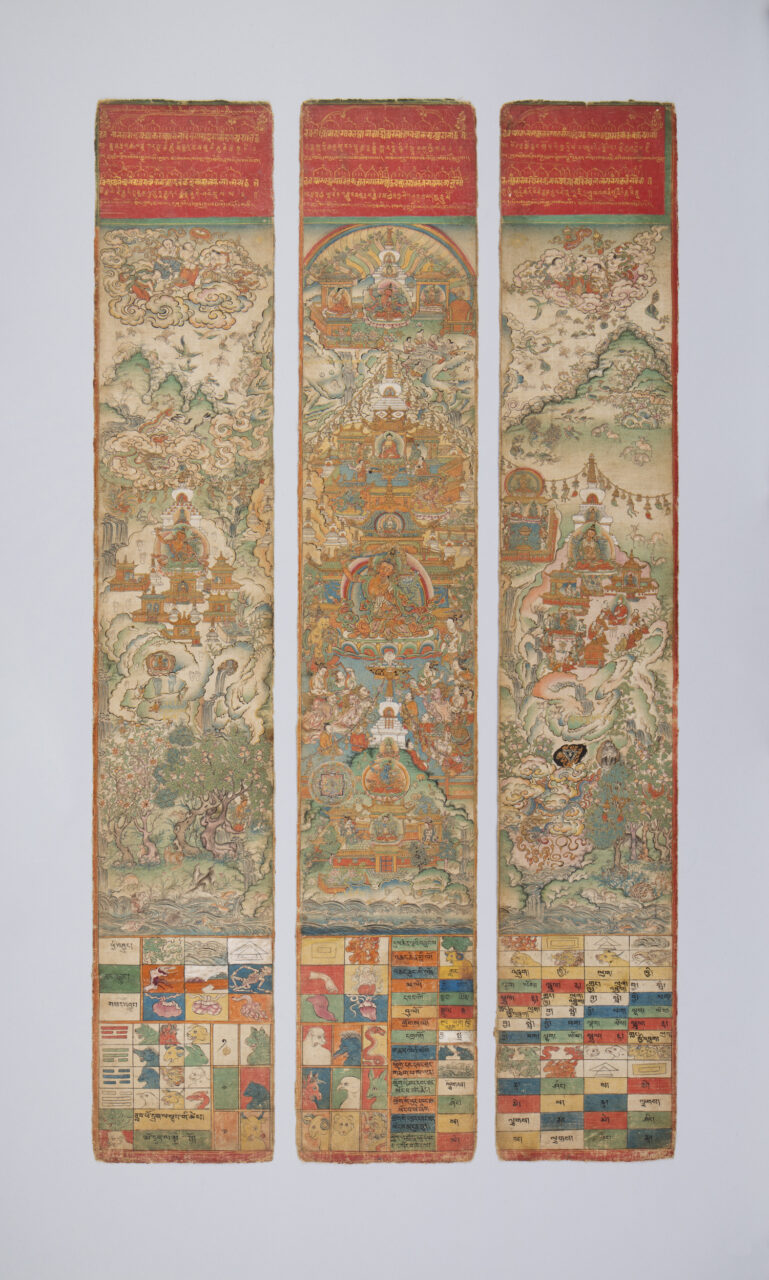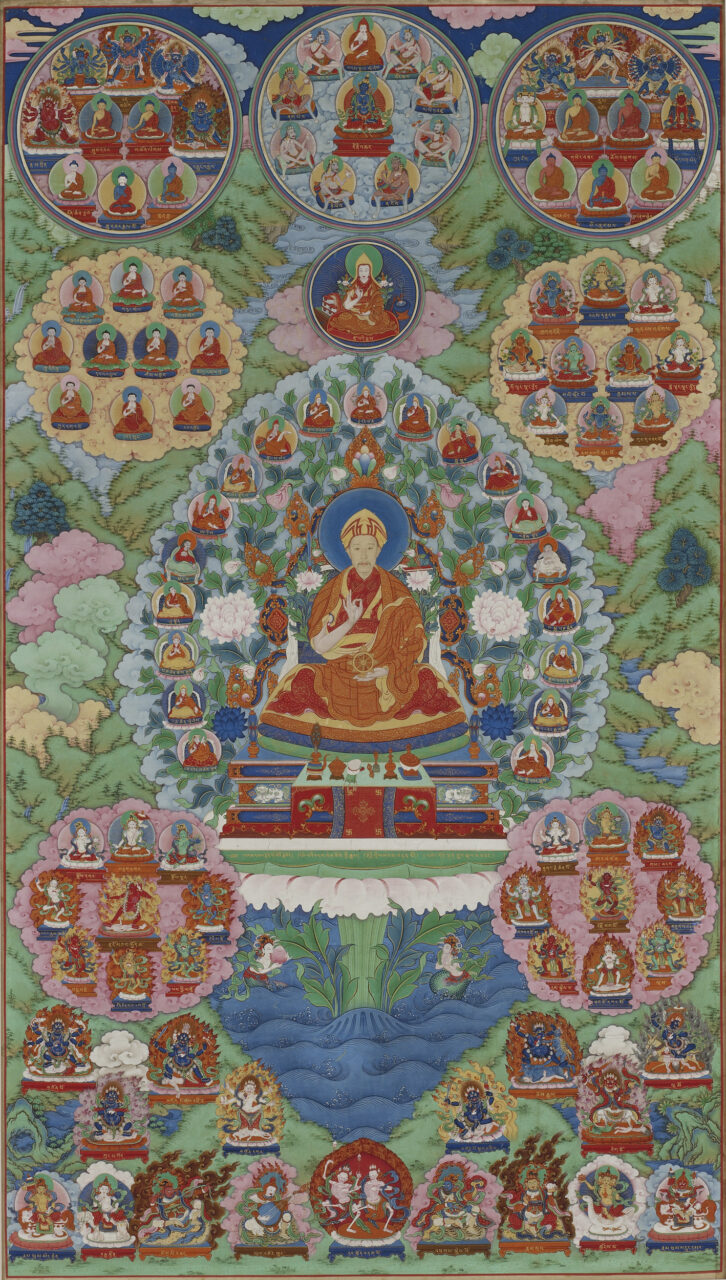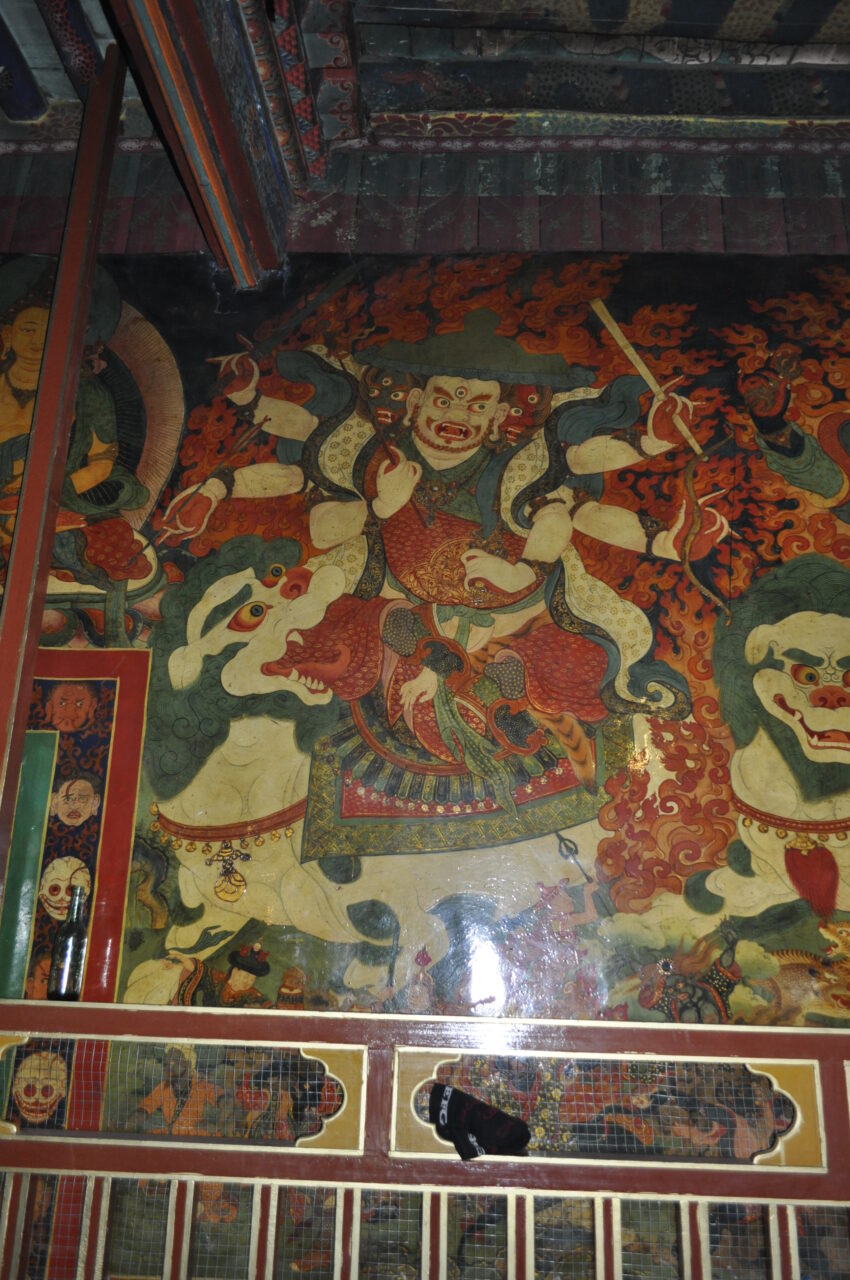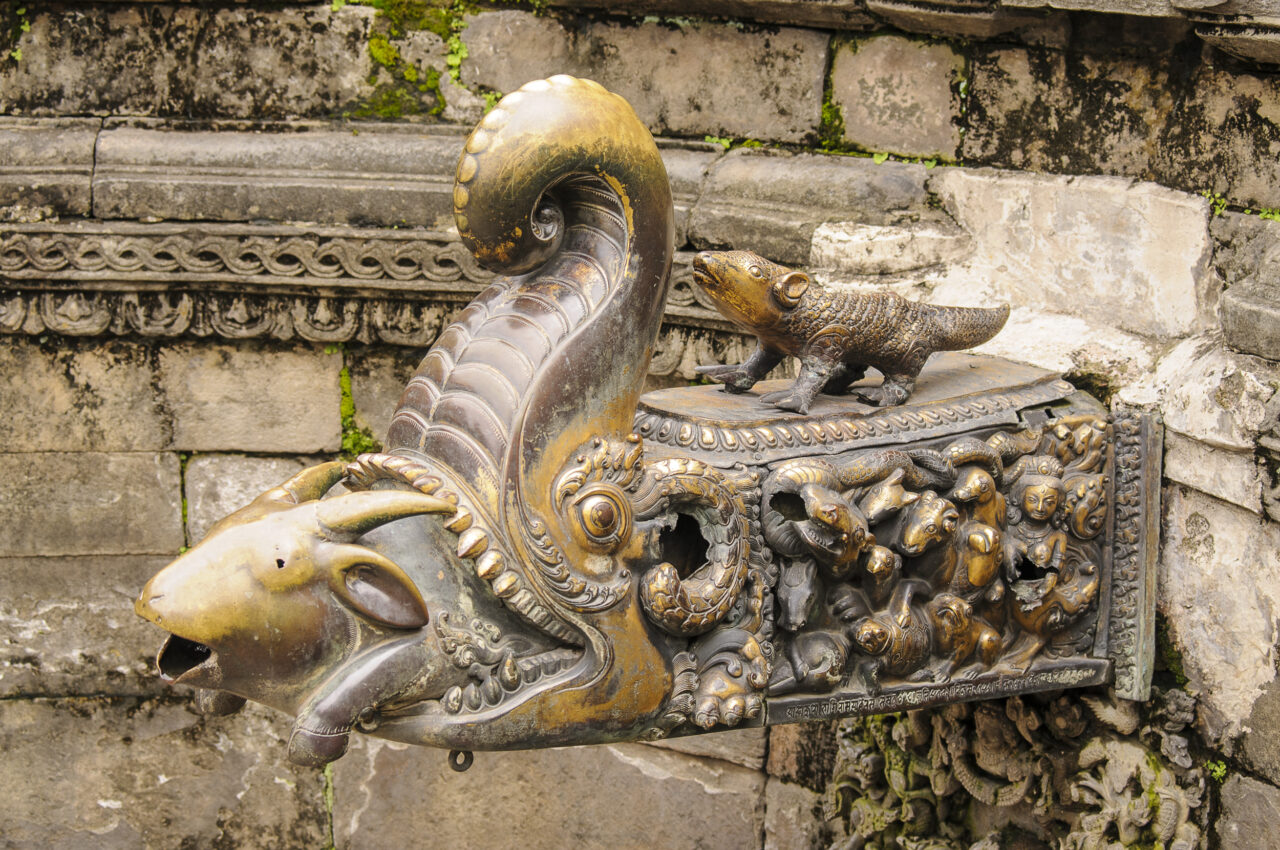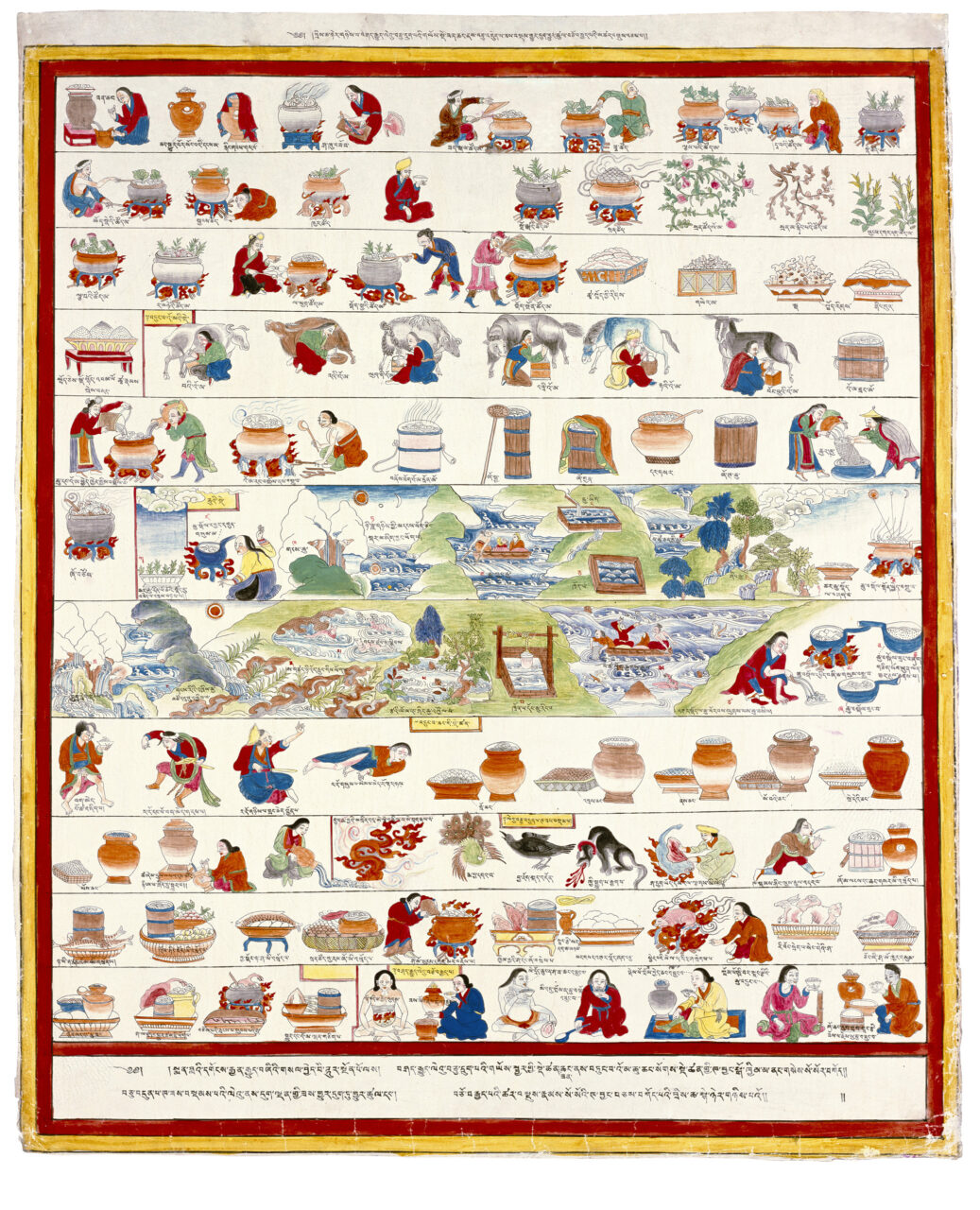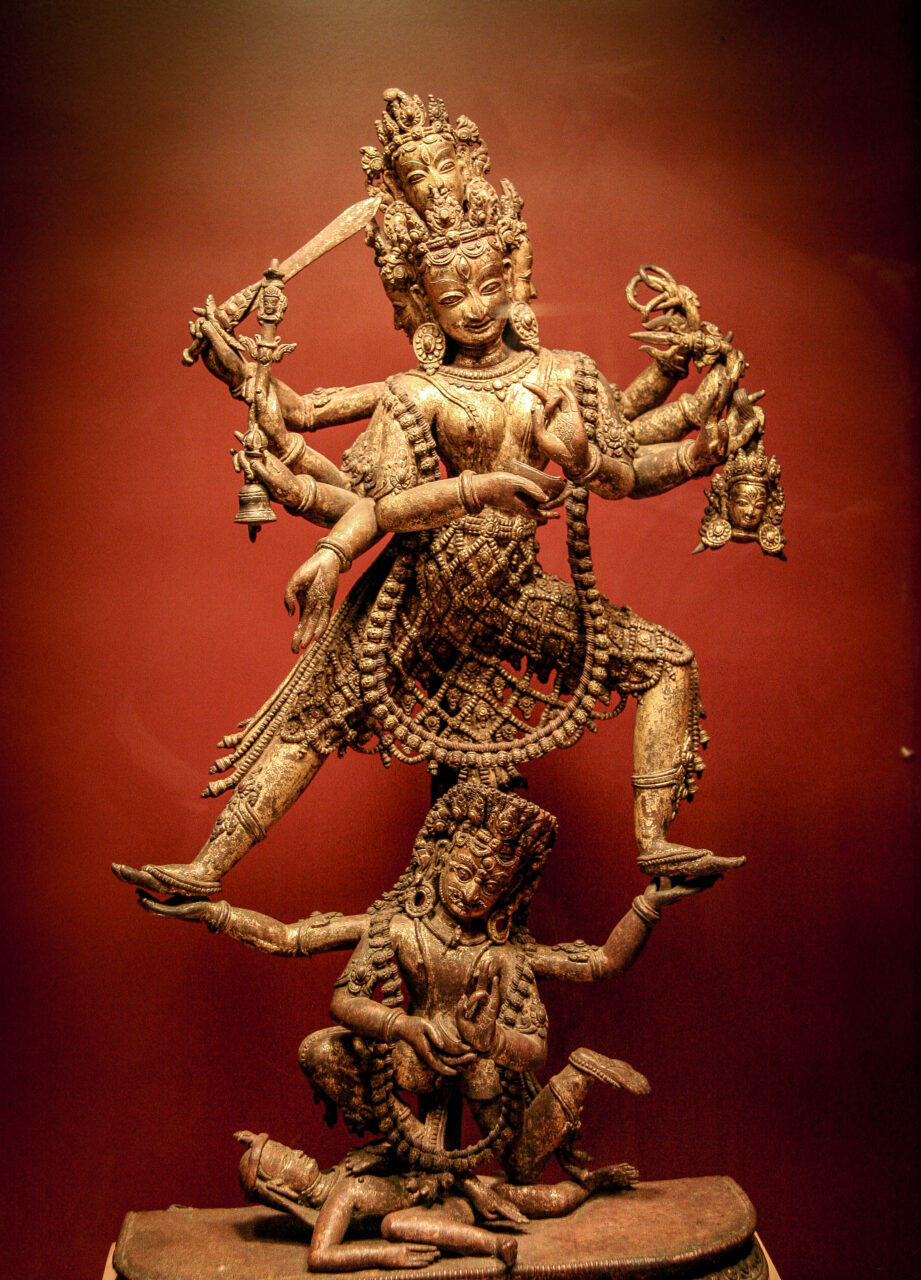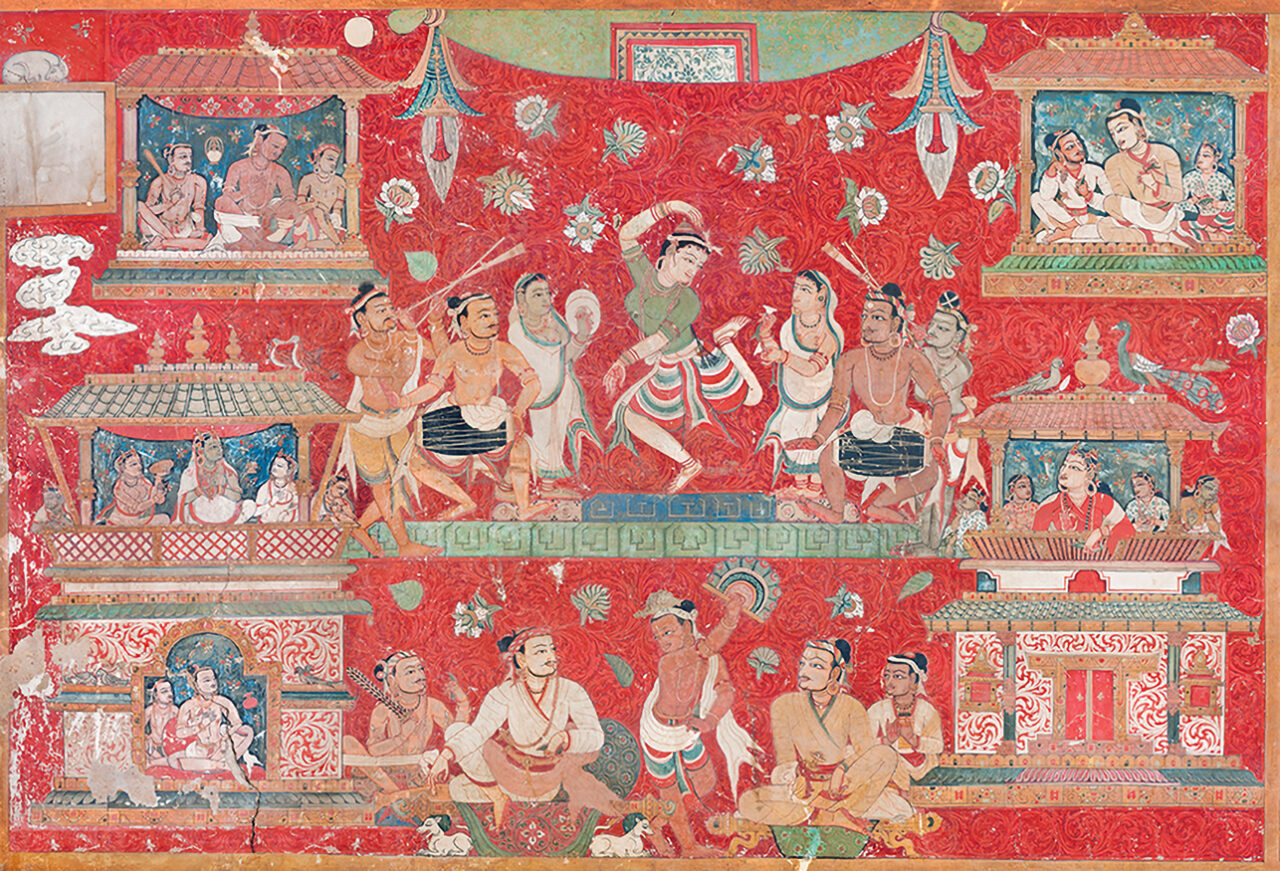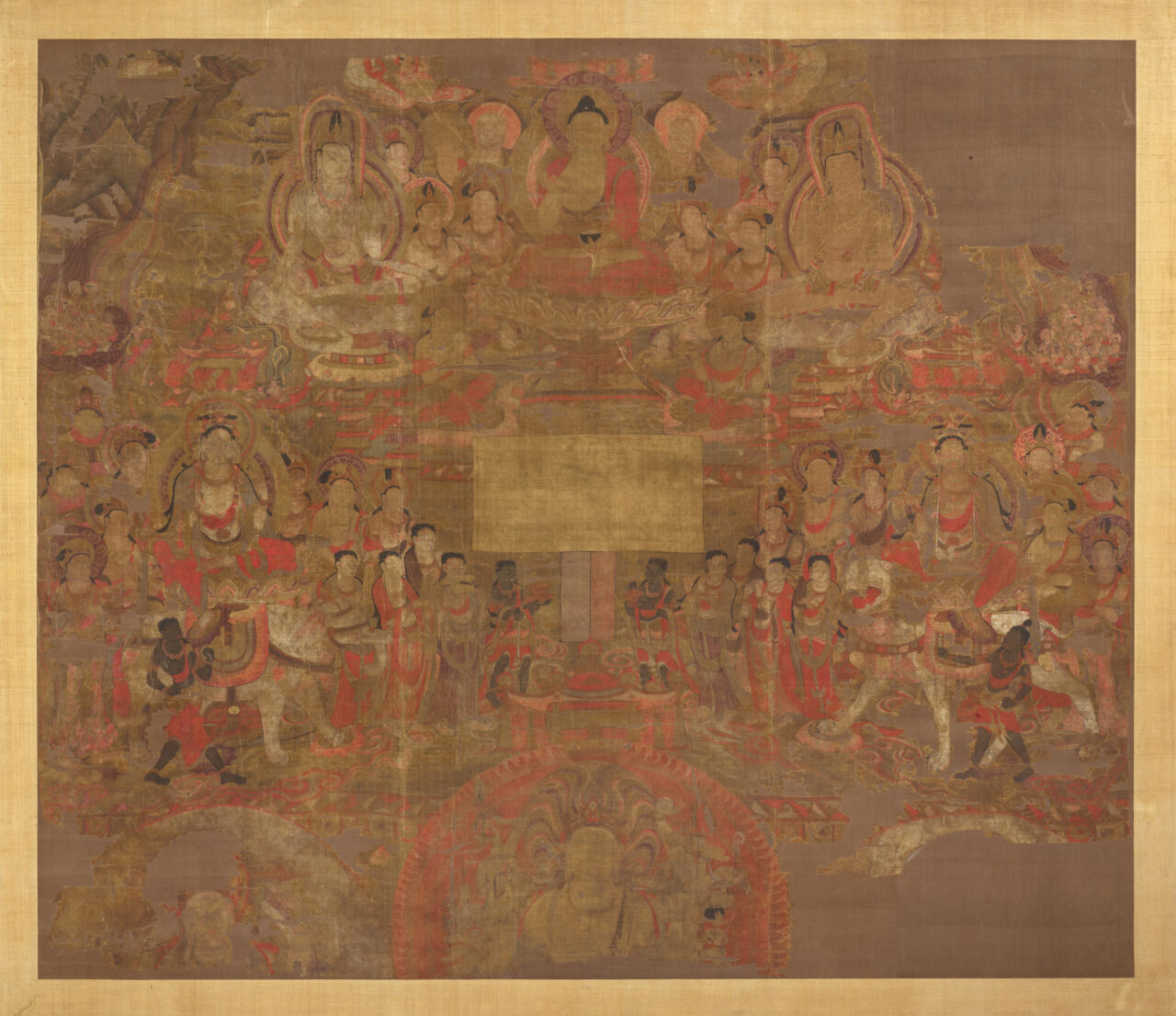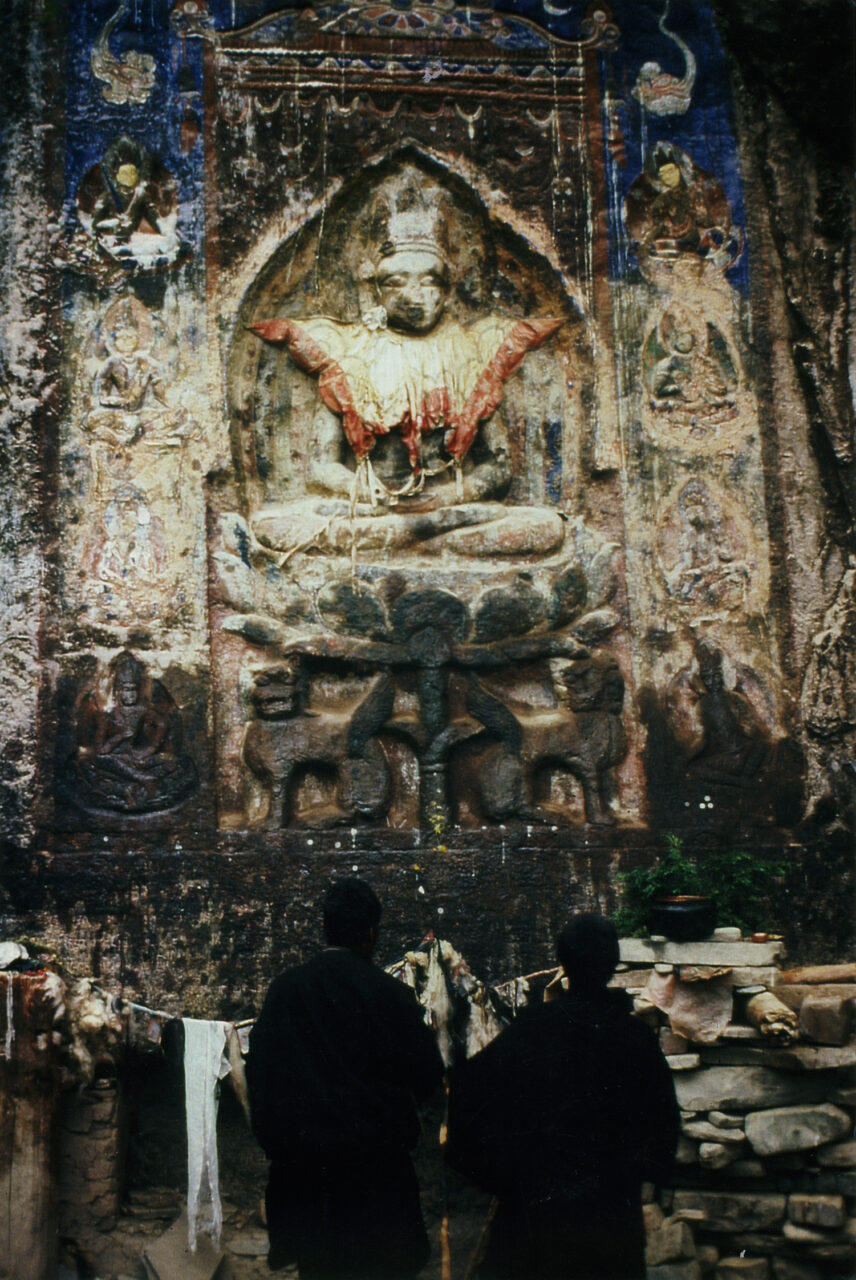In Vajrayana Buddhism, deity yoga is a meditative visualization practice centered on a deity. Practitioners imagine themselves as a deity (Tib. yidam), or visualize the deity in front of themselves, while contemplating and internalizing the deity’s enlightened qualities of mind and powers. As a result, the practitioners develop a special connection with the deity and attain the deity’s awakened state. Specific instructions on the practice of deity yoga are laid out in tantras, and in texts called sadhana.
A practice of hiring and commissioning artists to create works of art. In religious context patrons were often rulers, religious leaders, as well as ordinary people. (see also donor)
Tantra was a religious movement in India around the fifth to seventh centuries, and its practices are part of Buddhism and Hinduism. The word tantra also refers to texts which transmit tantric practices. In Buddhism, tantra is also called Vajrayana, “The Vajra Vehicle.” Tantric ritual and art are characterized by deity yoga, mandalas, mantras, abhisheka (initiation), wrathful deities, and ritual sexual union. In Hinduism, tantrism was often associated with the worship of Shiva and various goddesses (shakti). A practitioner of tantra is called a “tantrika.” Tantra is also a genre of texts that have been variously categorized. Most common is the division of tantras into four categories: Kriya Tantra, Charya Tantra, Yoga Tantra, and Highest Yoga Tantra.
Historically, Tibetan Buddhism refers to those Buddhist traditions that use Tibetan as a ritual language. It is practiced in Tibet, Mongolia, Bhutan, Ladakh, and among certain groups in Nepal, China, and Russia and has an international following. Buddhism was introduced to Tibet in two waves, first when rulers of the Tibetan Empire (seventh to ninth centuries CE), embraced the Buddhist faith as their state religion, and during the second diffusion (late tenth through thirteenth centuries), when monks and translators brought in Buddhist culture from India, Nepal, and Central Asia. As a result, the entire Buddhist canon was translated into Tibetan, and monasteries grew to become centers of intellectual, cultural, and political power. From the end of the twelfth century, Tibetans were exporting their own Buddhist traditions abroad. Tibetan Buddhism integrates Mahayana teachings with the esoteric practices of Vajrayana, and includes those developed in Tibet, such as Dzogchen, as well as indigenous Tibetan religious practices focused on local gods. Historically major traditions of Tibetan Buddhism are Nyingma, Kagyu, Sakya, and Geluk.
Visualization is a process of using one’s imagination to transform reality. A practitioner imagines in their mind’s eye the deity with the associated enlightened qualities they wish to embody themselves. When focused on a specific deity, visualization and related ritual practices are called deity yoga. Visualization is a fundamental element of such practices described in texts known tantras, which define a system of meditation and ritual meant to transform the mind and body.
In Vajrayana Buddhism or Bon, a mandala refers to a cosmic abode of a deity, usually depicted as a diagram of a circle with an inscribed square that represents the deity enthroned in their palace, surrounded by members of their retinue. Mandalas can be painted, three-dimensional models, architectural structures, such as temples or stupas, or composed as arrangements of images within a temple. The instructions for creating and visualizing mandalas are usually found in ritual texts, such as tantras and sadhanas. Mandalas can be used in initiation ceremonies, visualized by a practitioner as part of deity yoga, consecrated and used to represent the divine presence within ritual space, offered to the deities as representations of the entire universe. A similar concept in Hinduism is a yantra.




